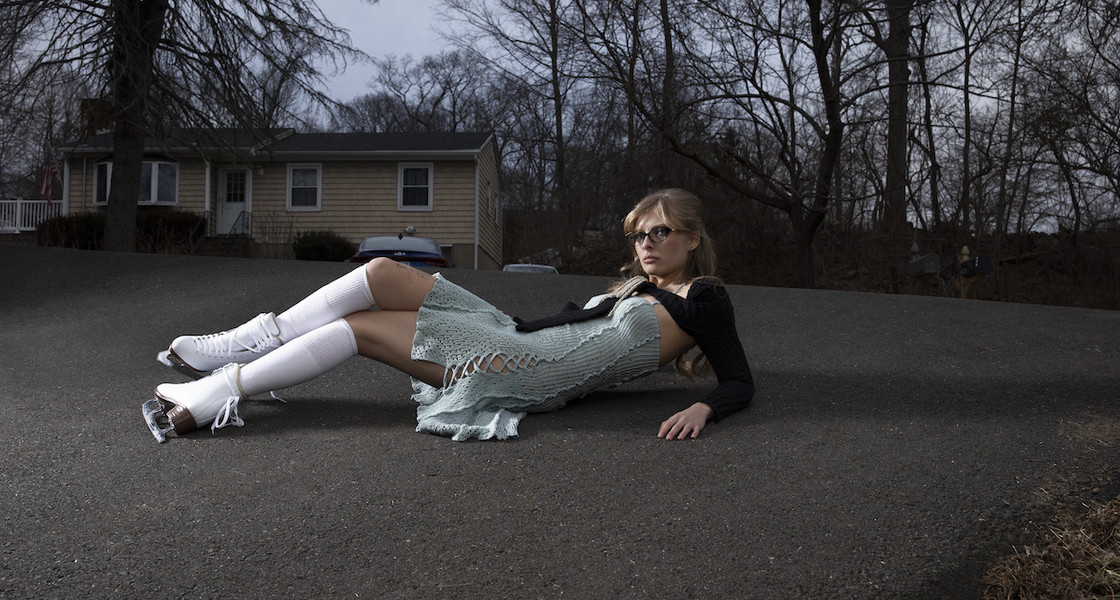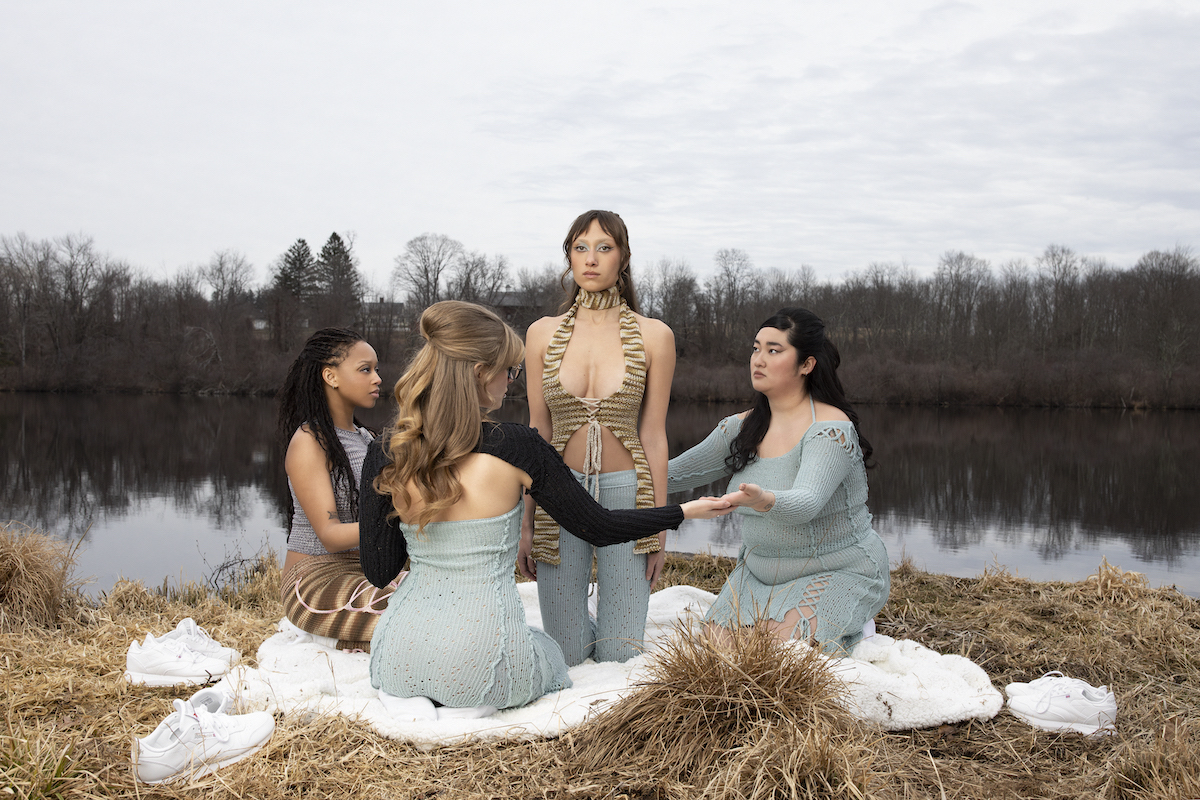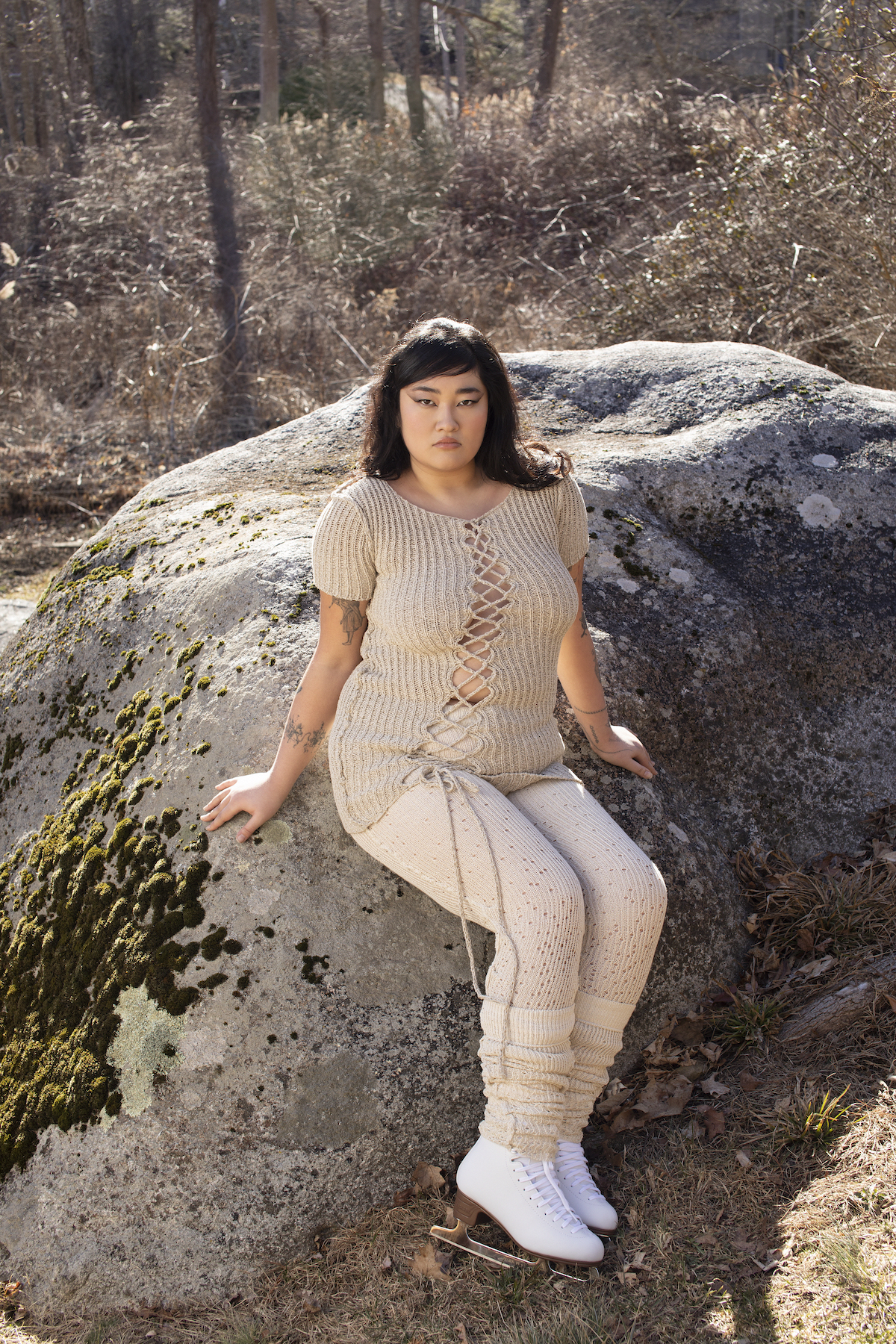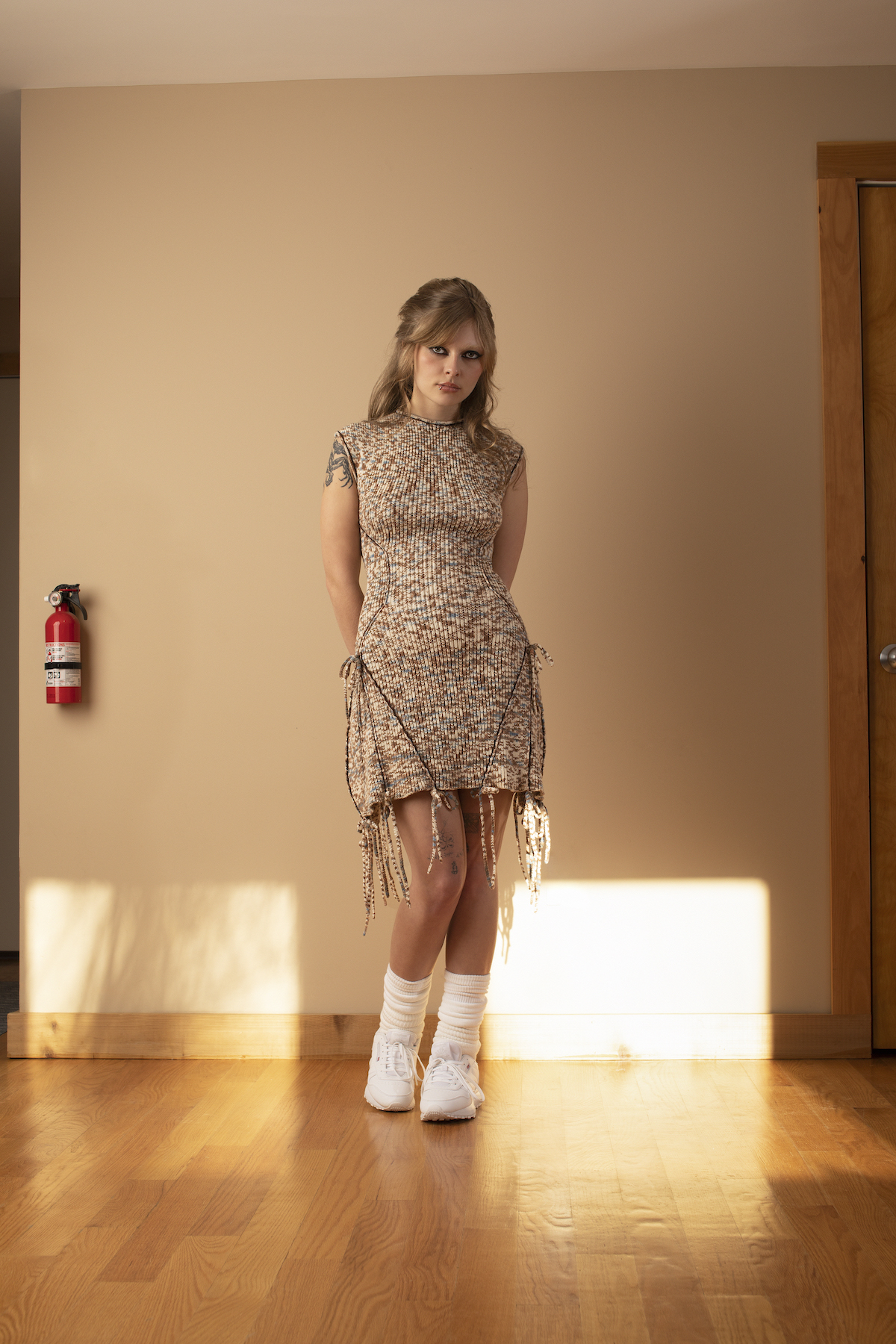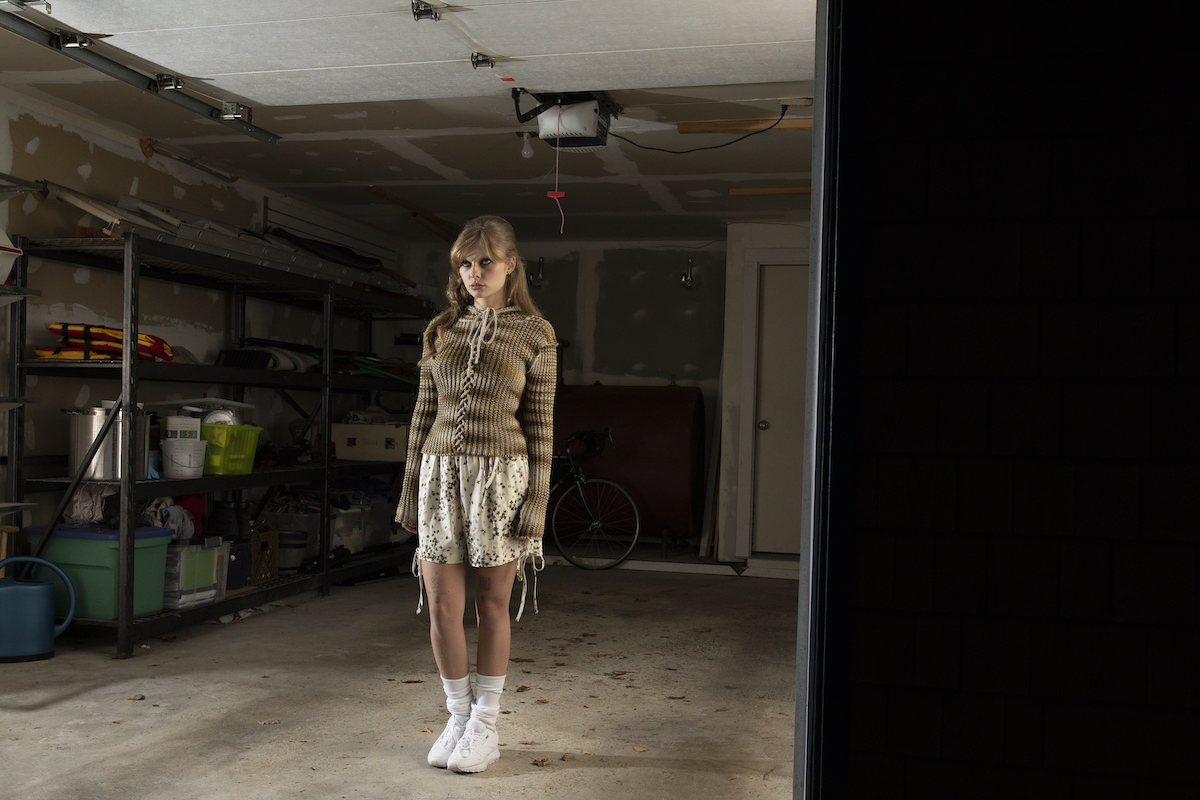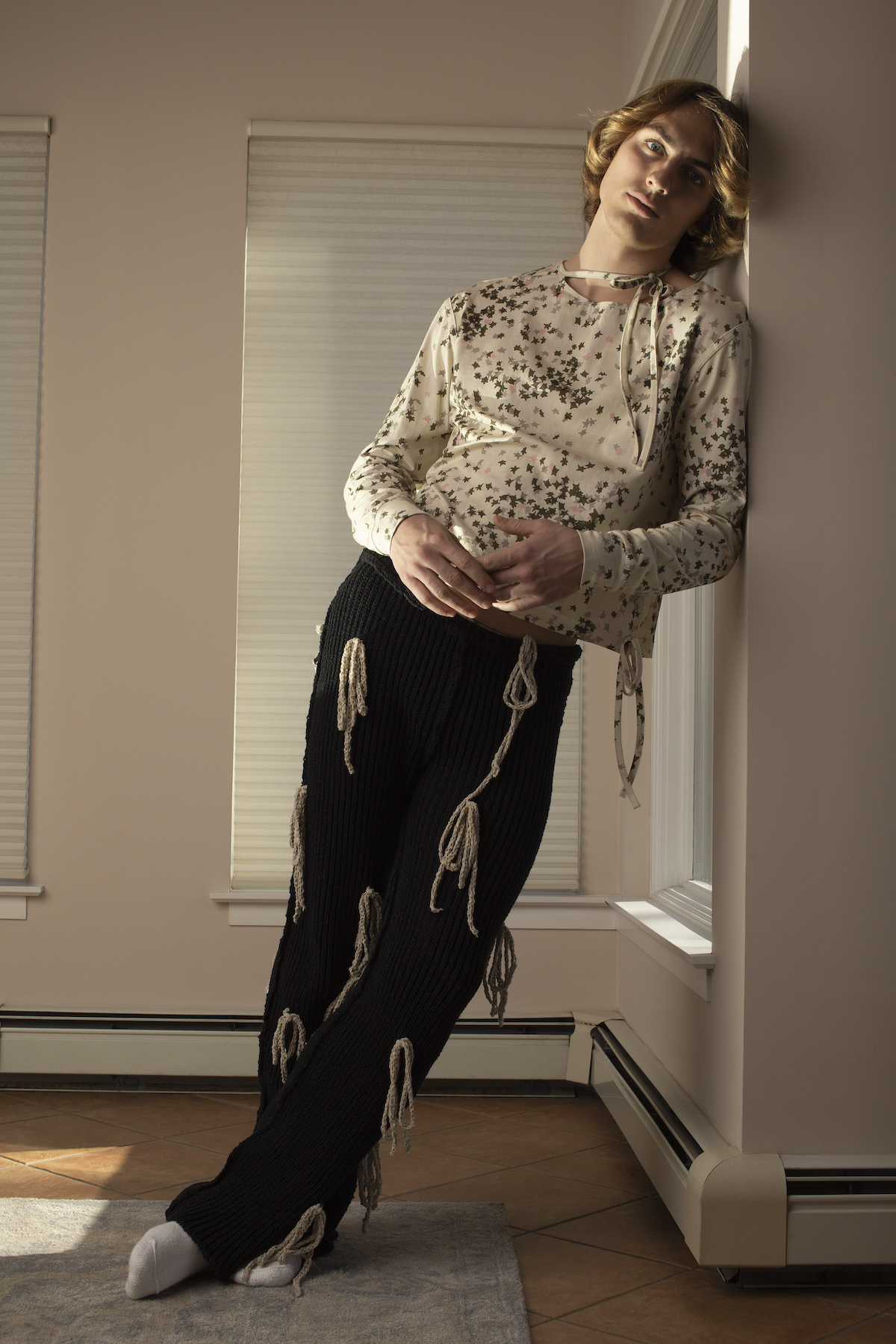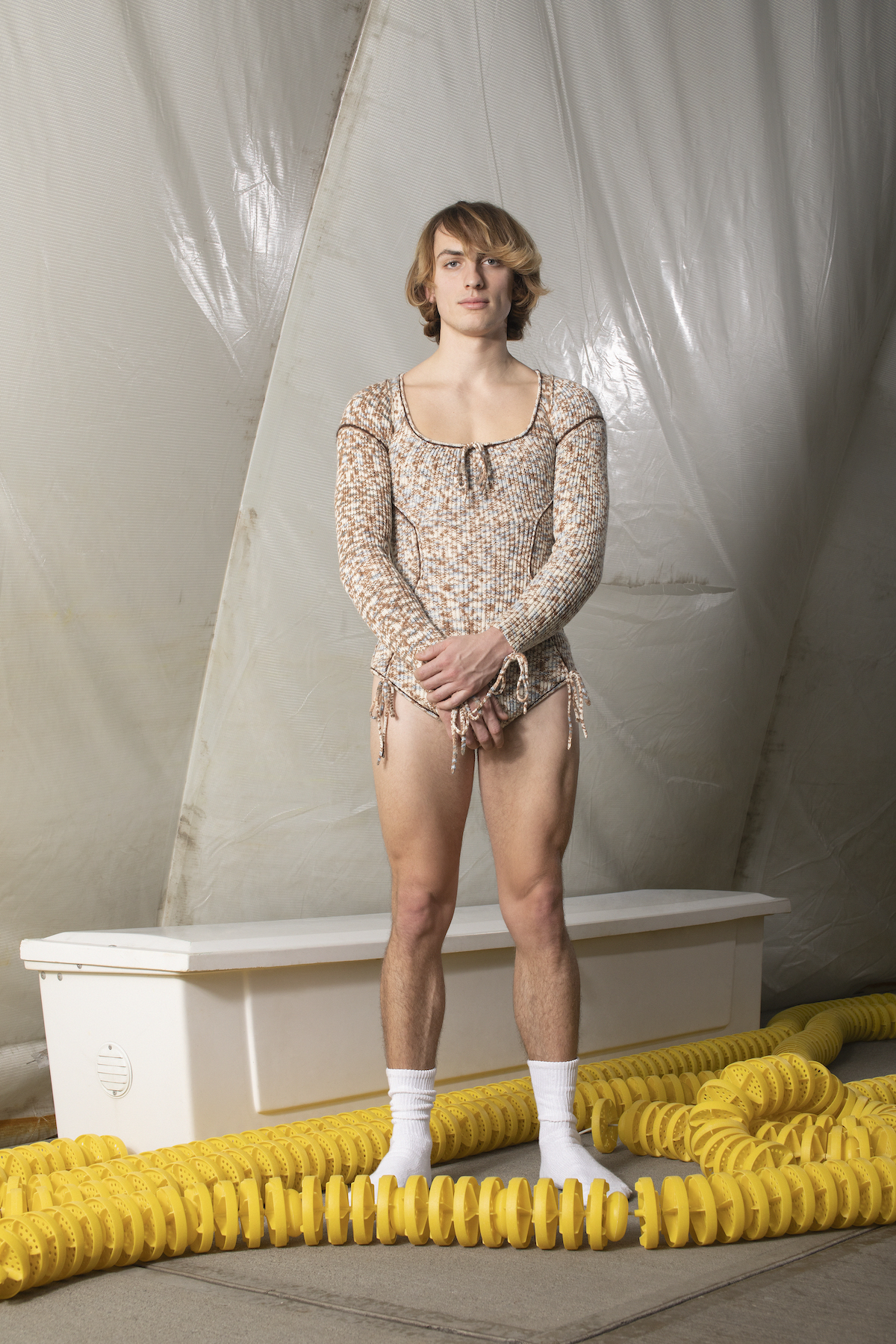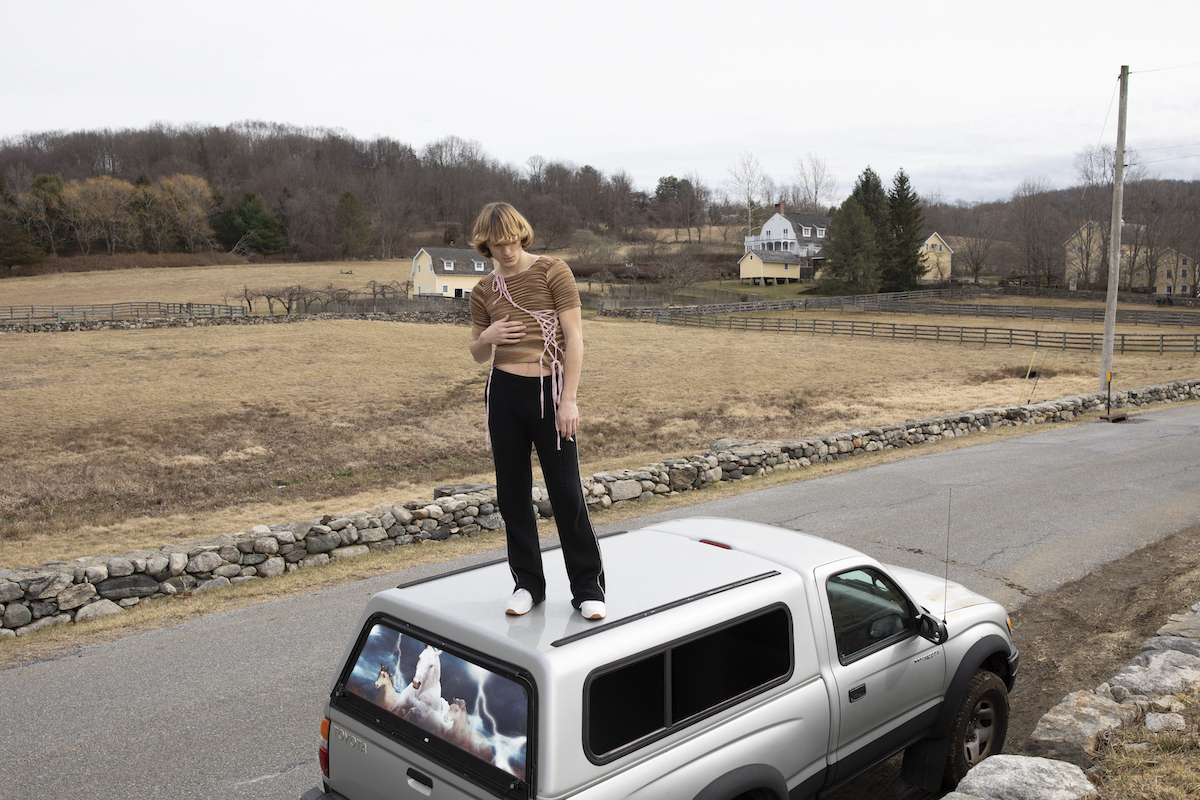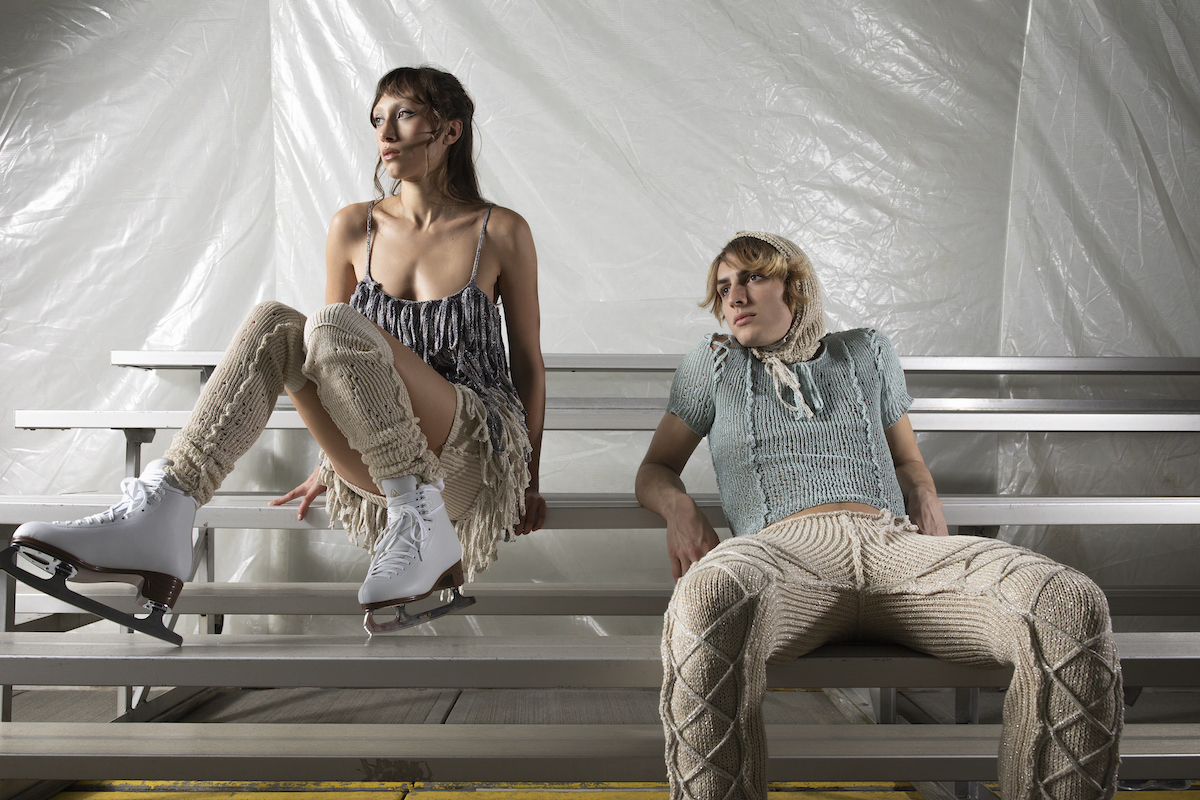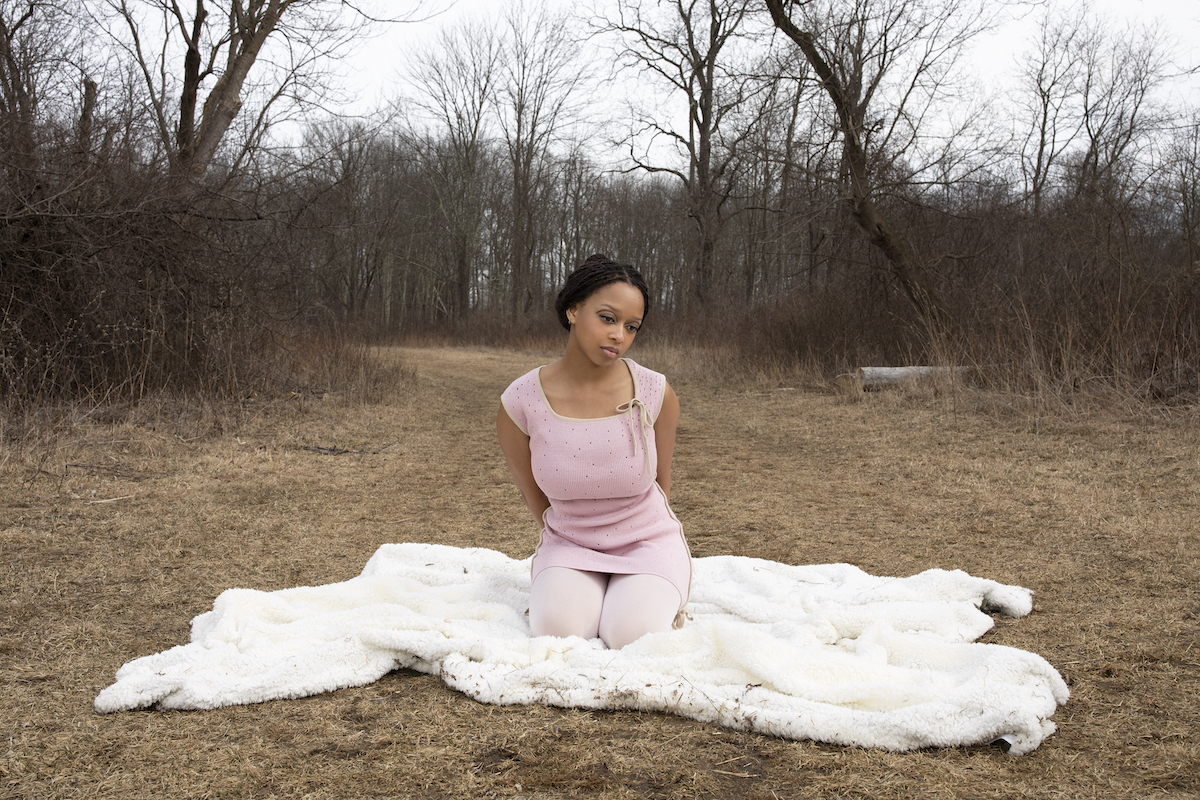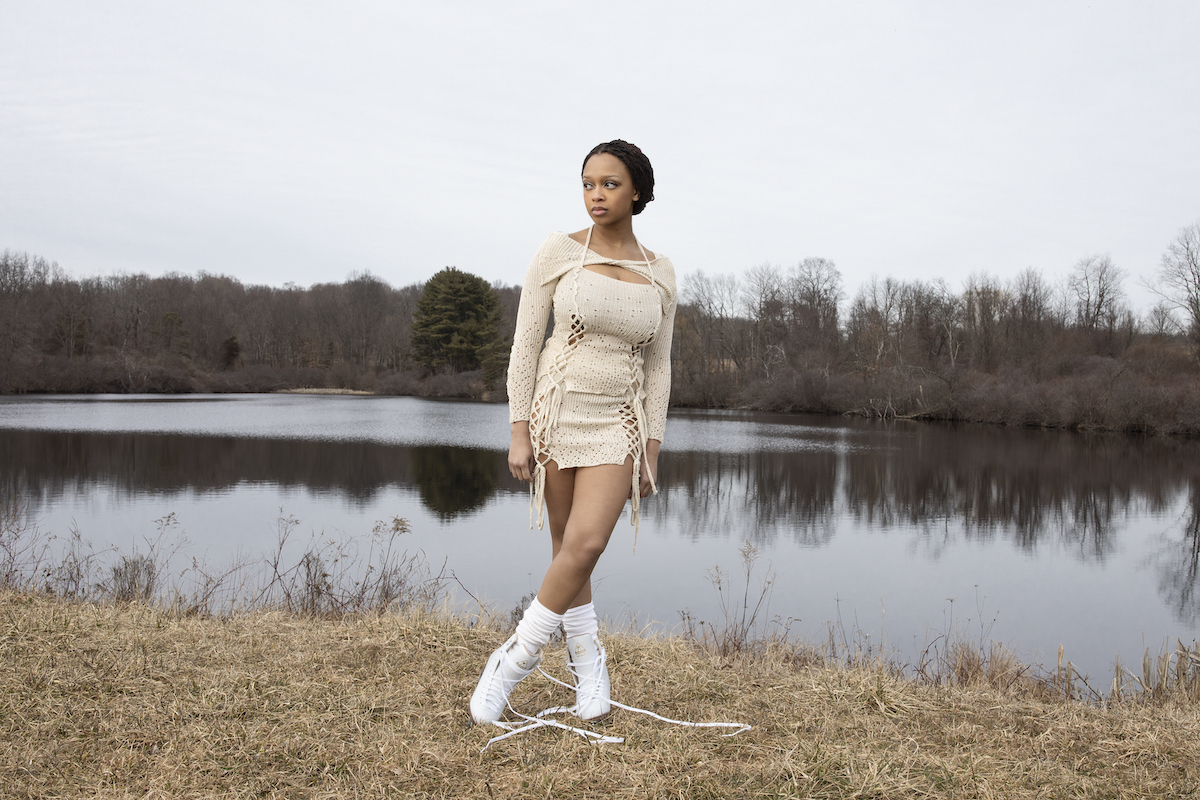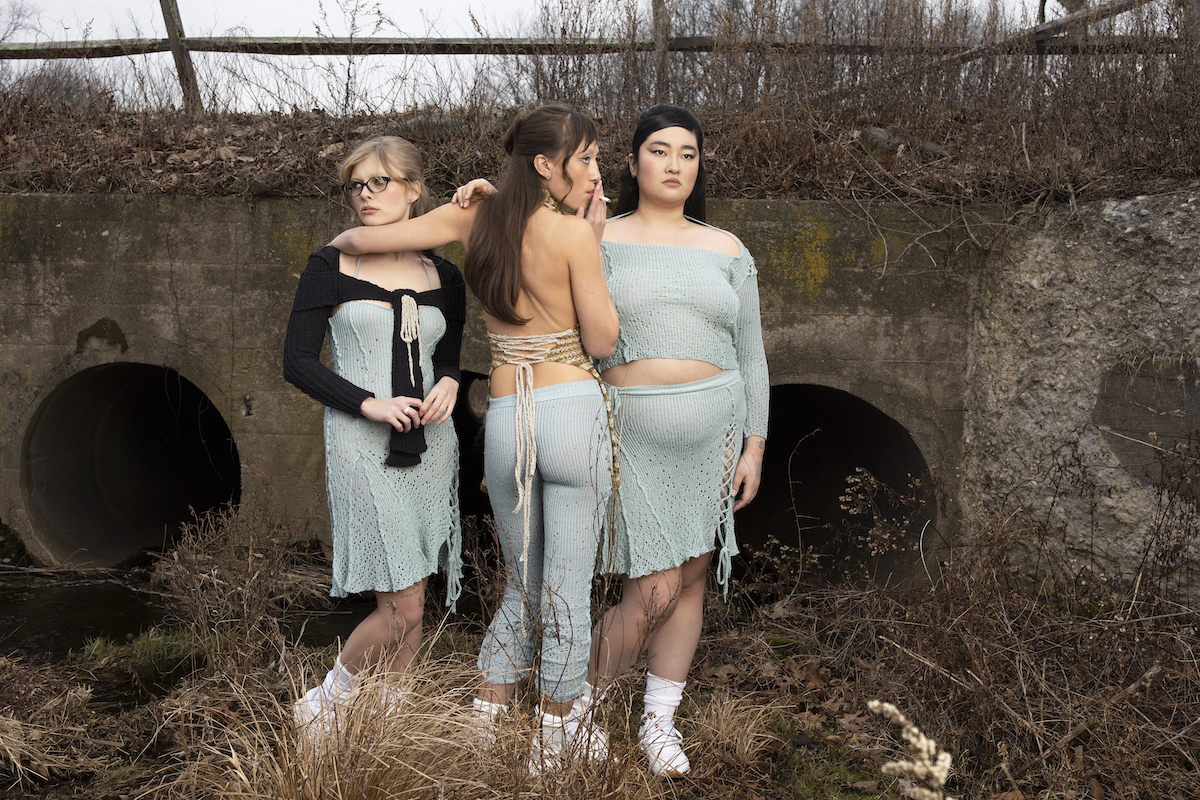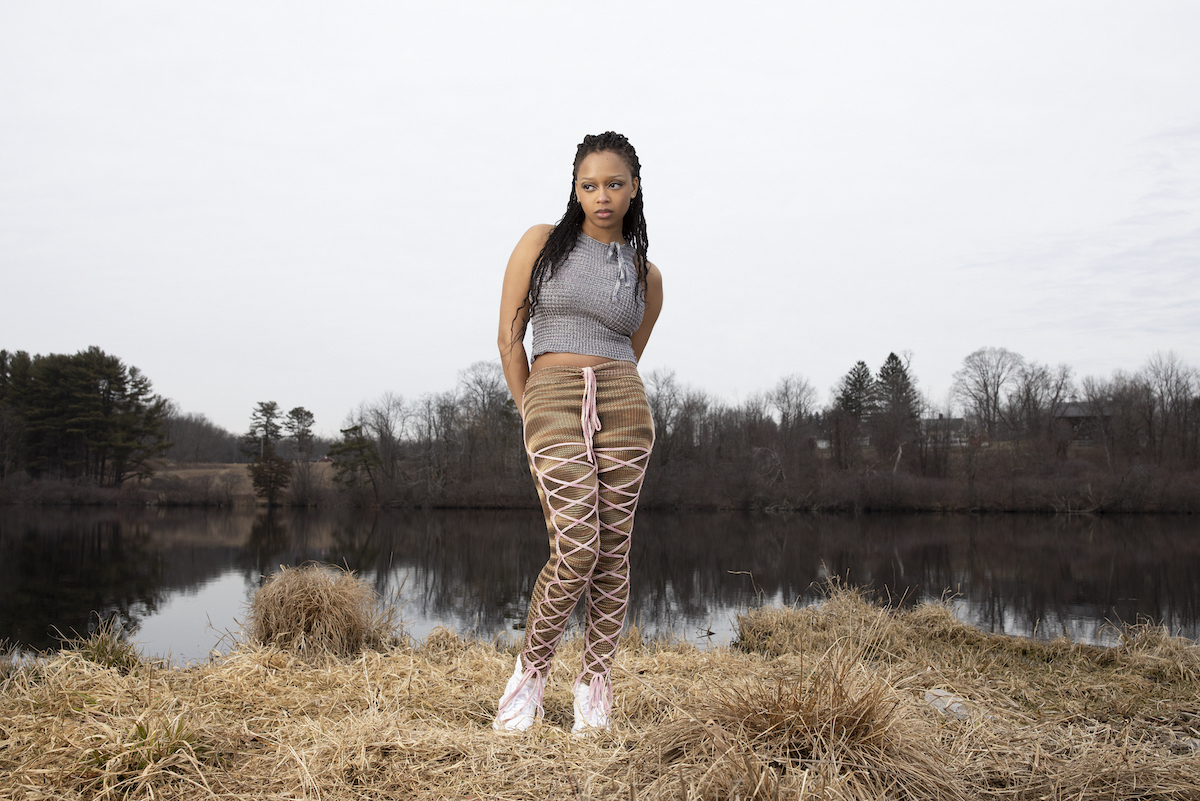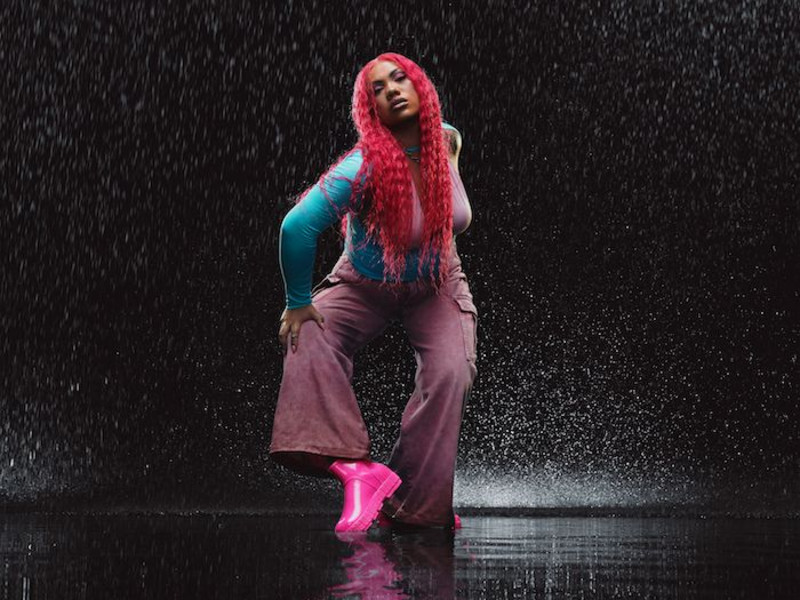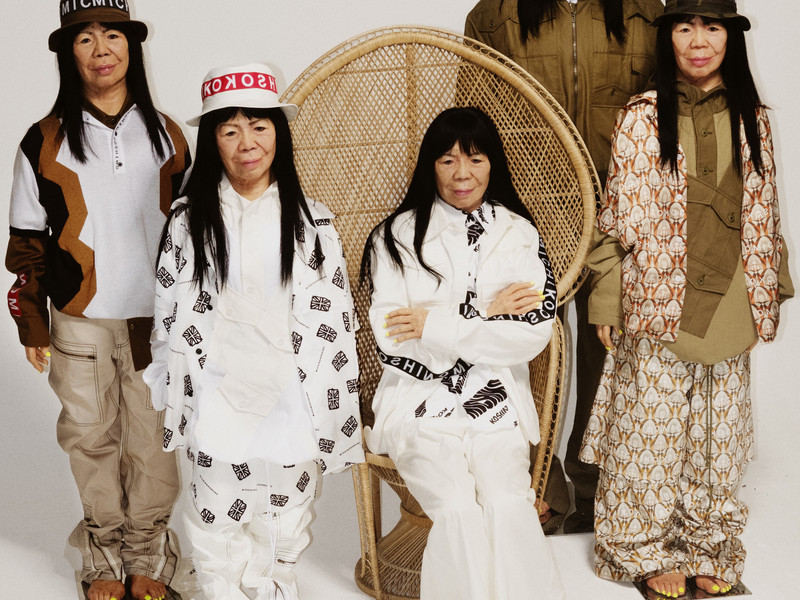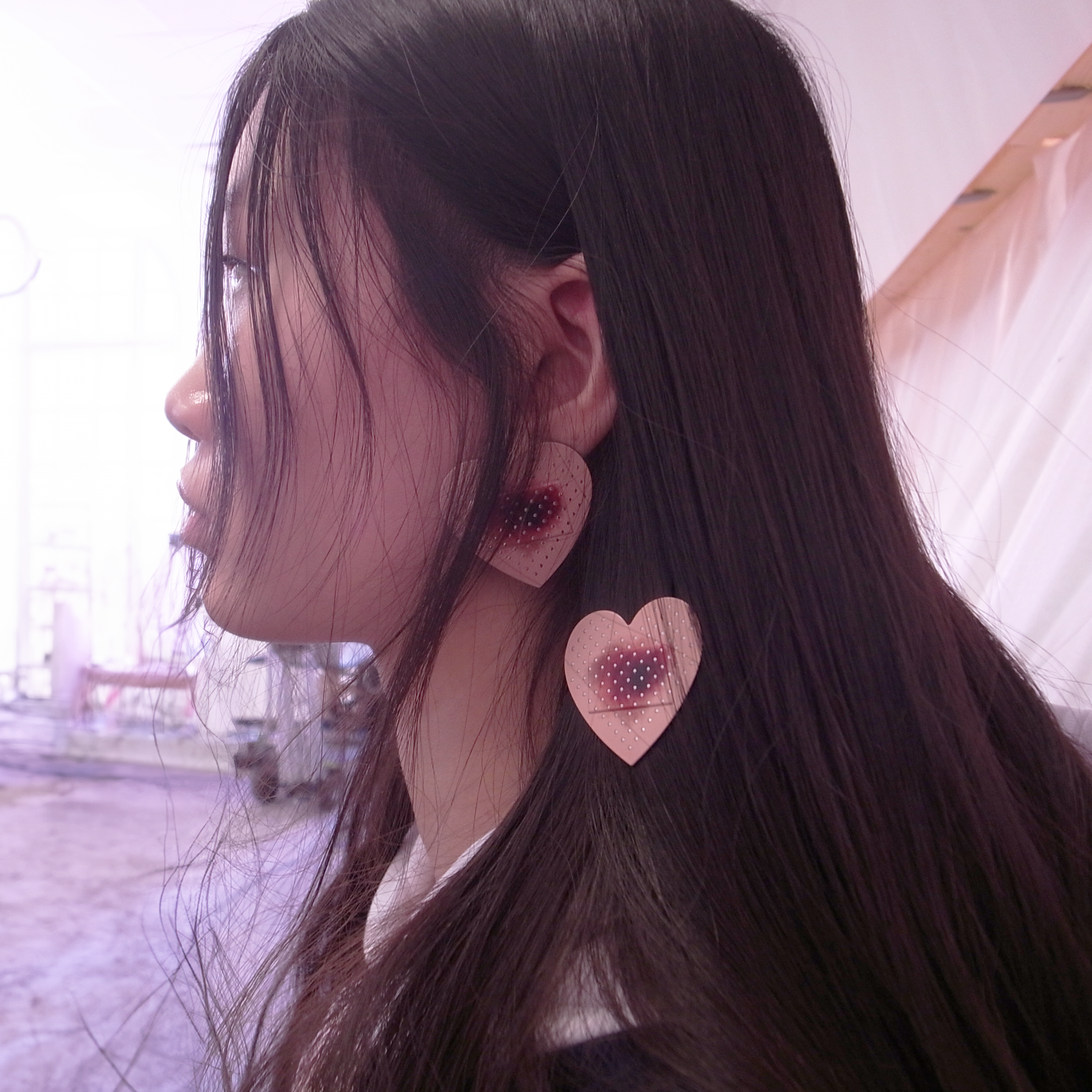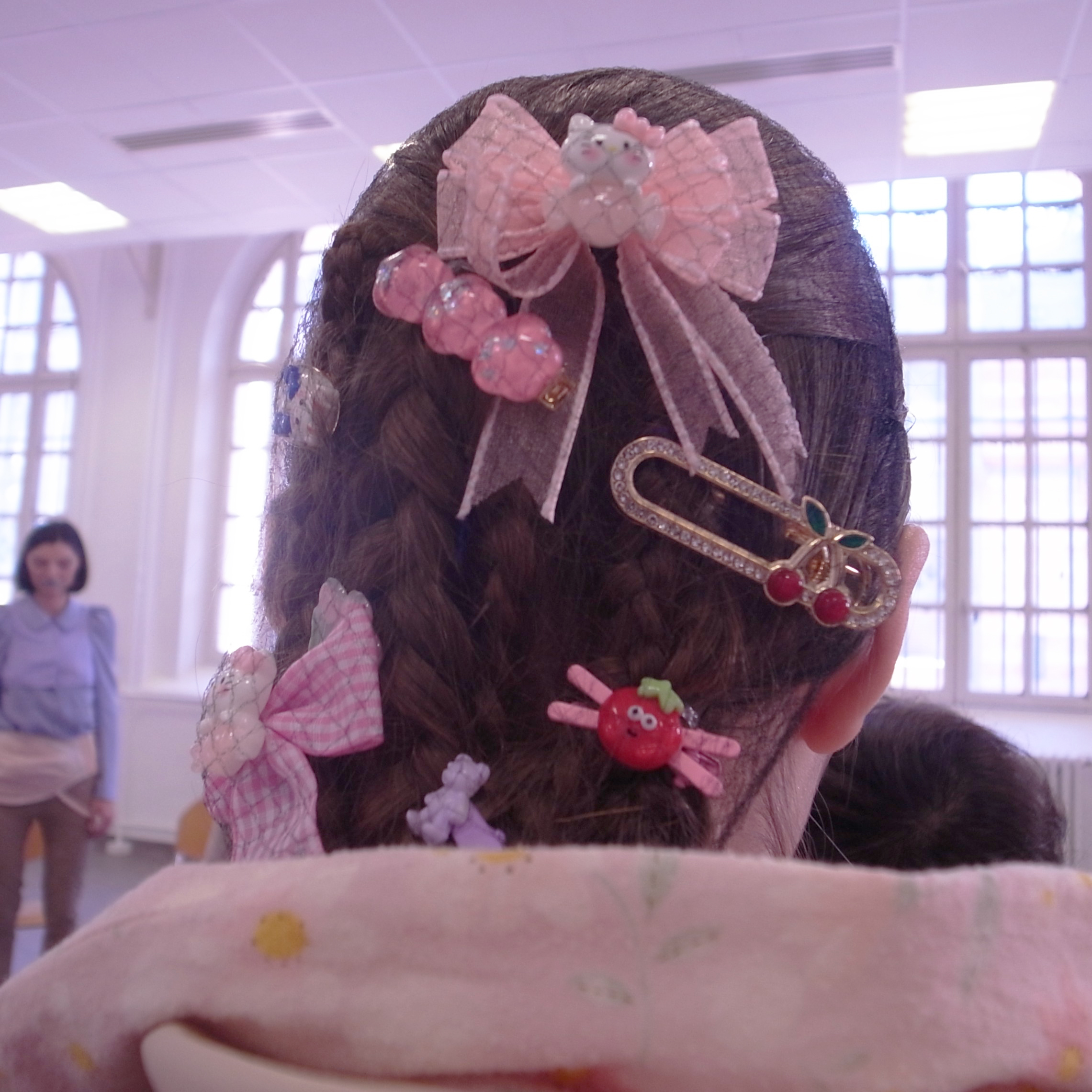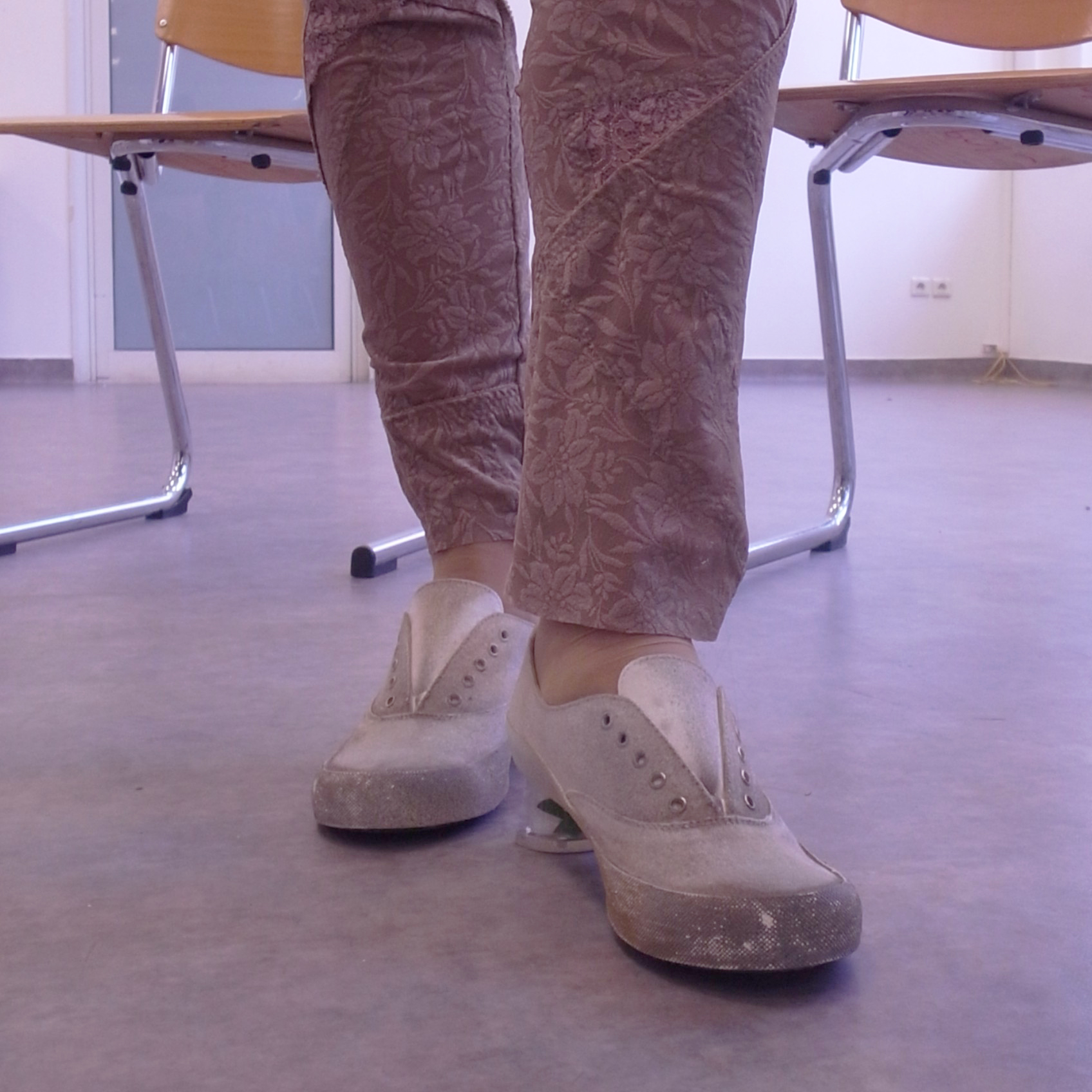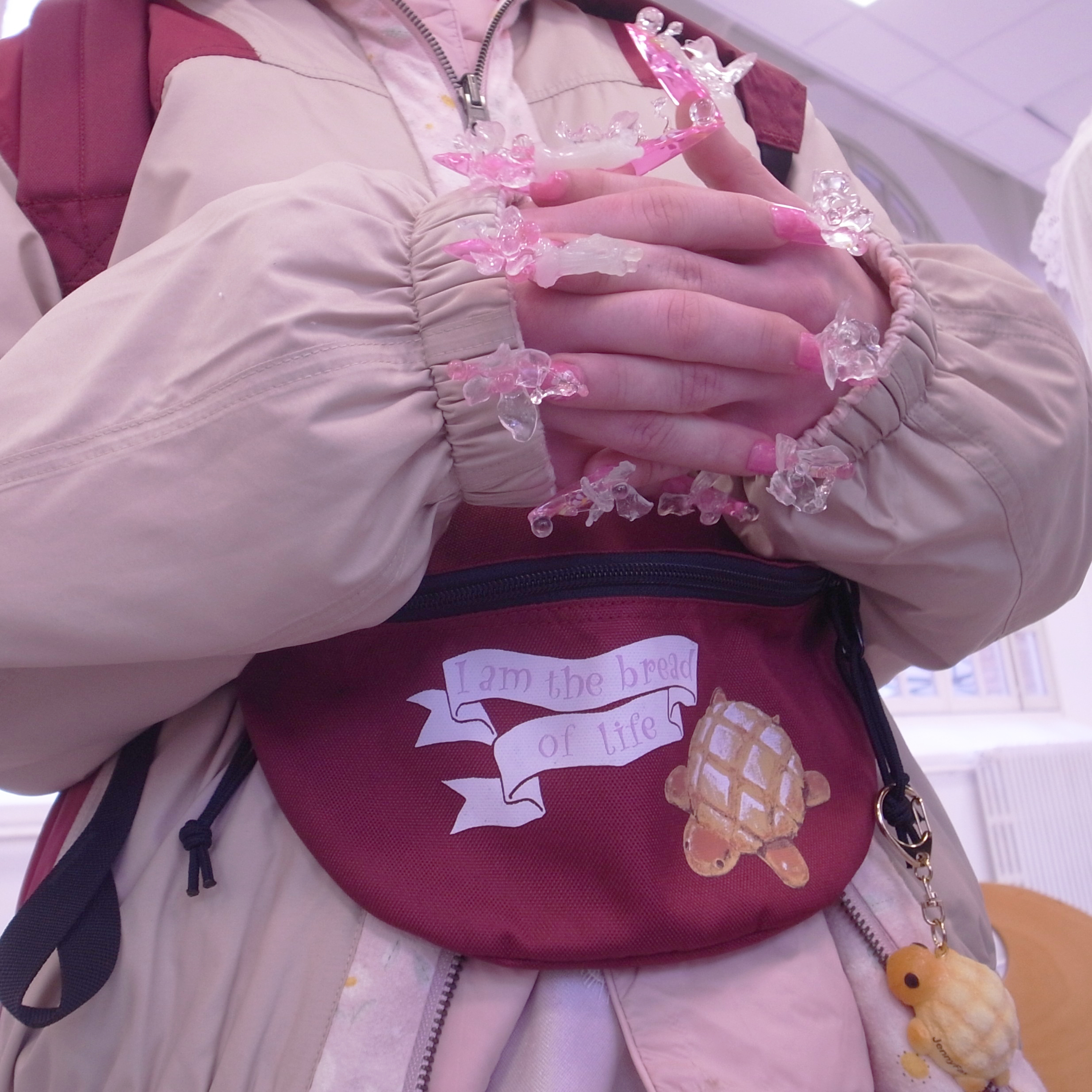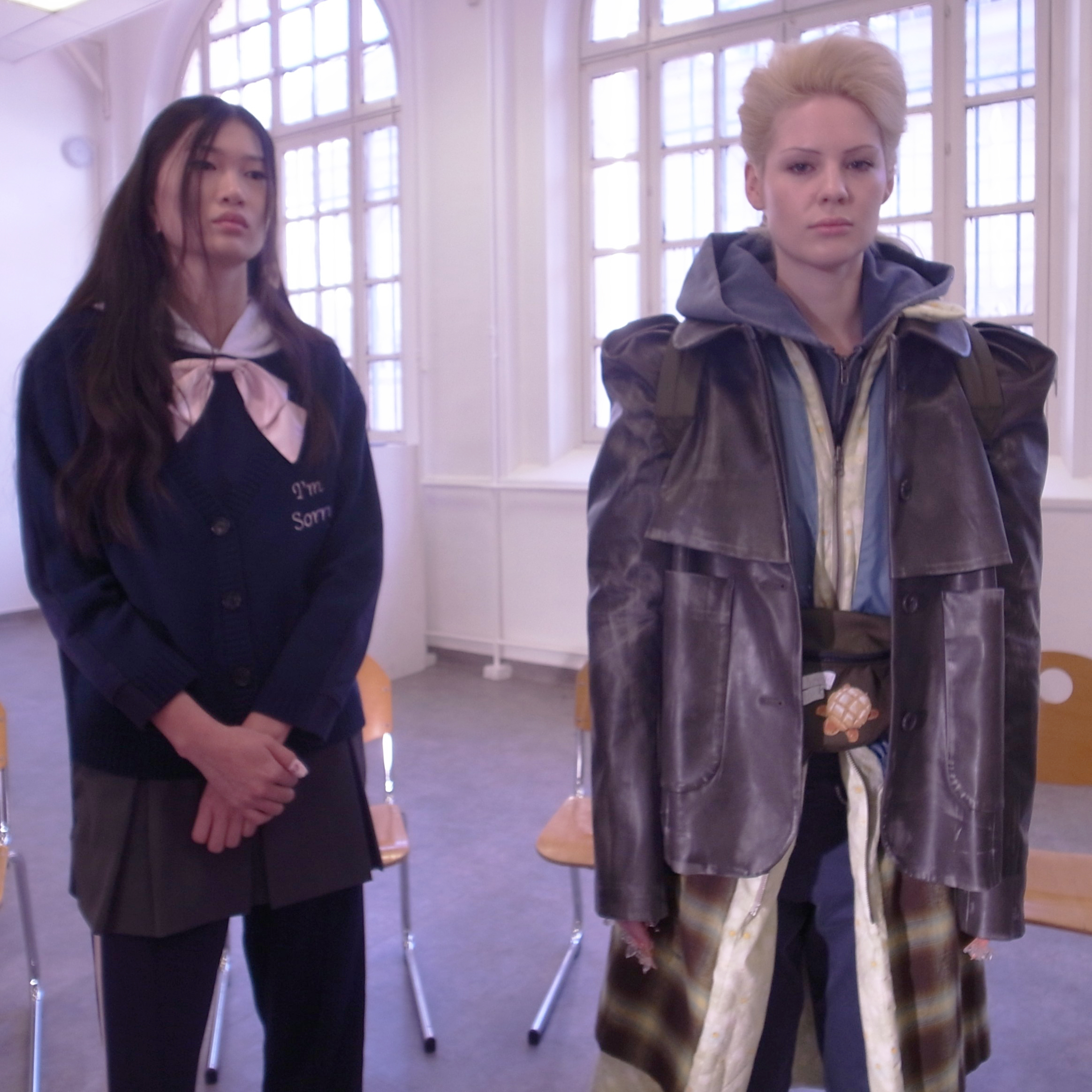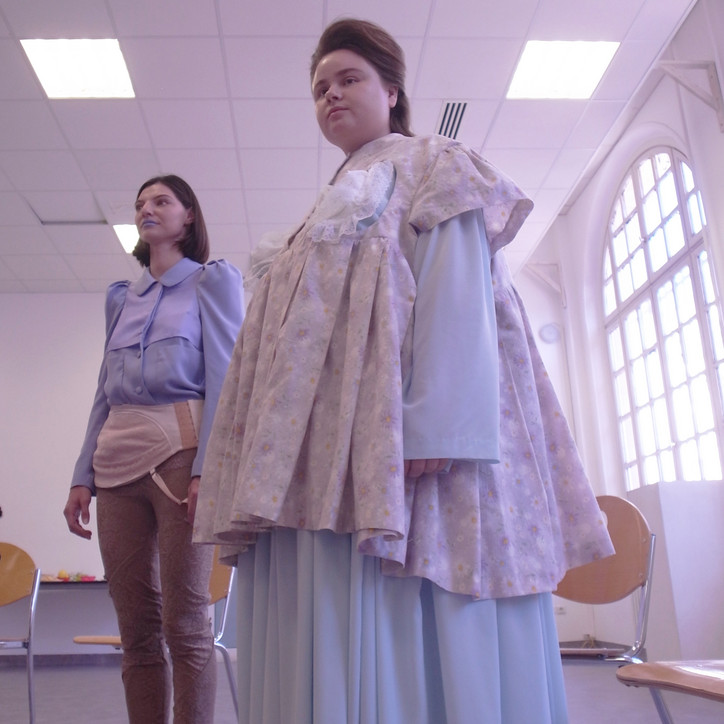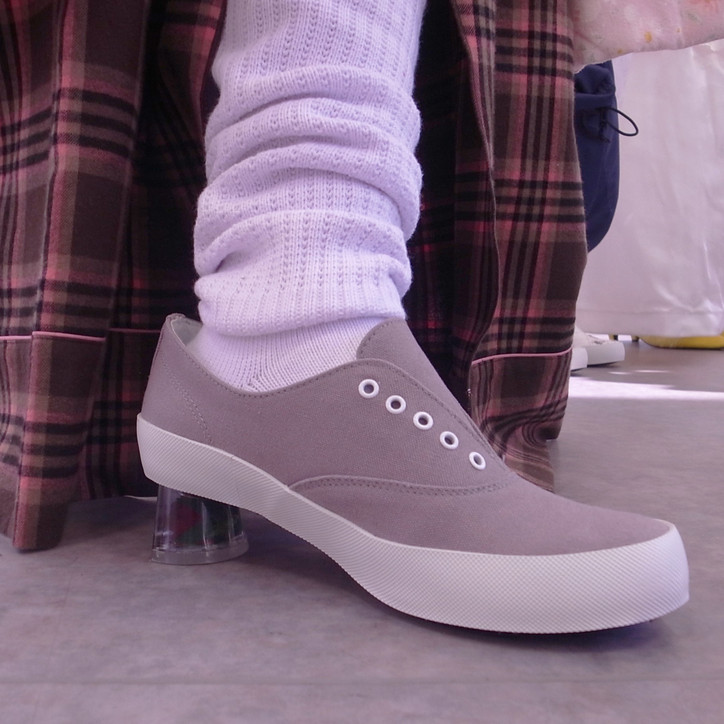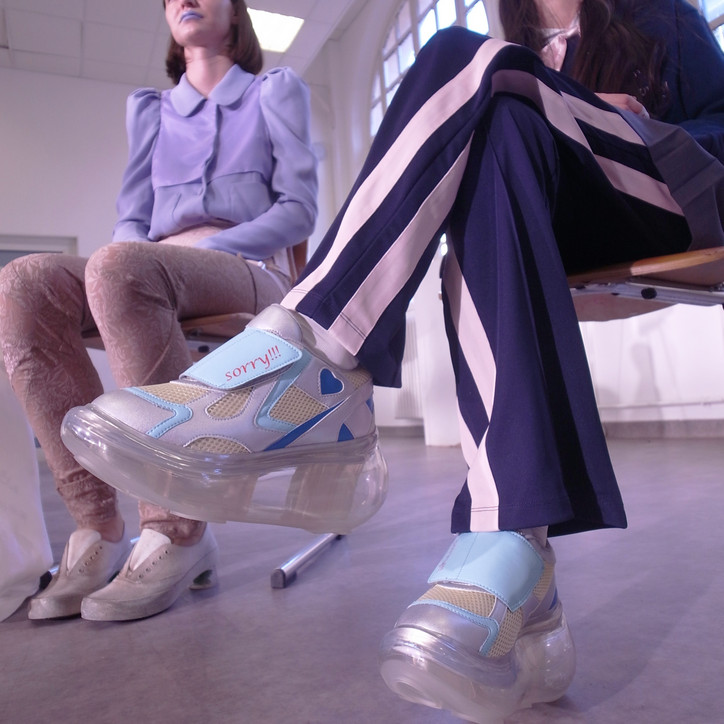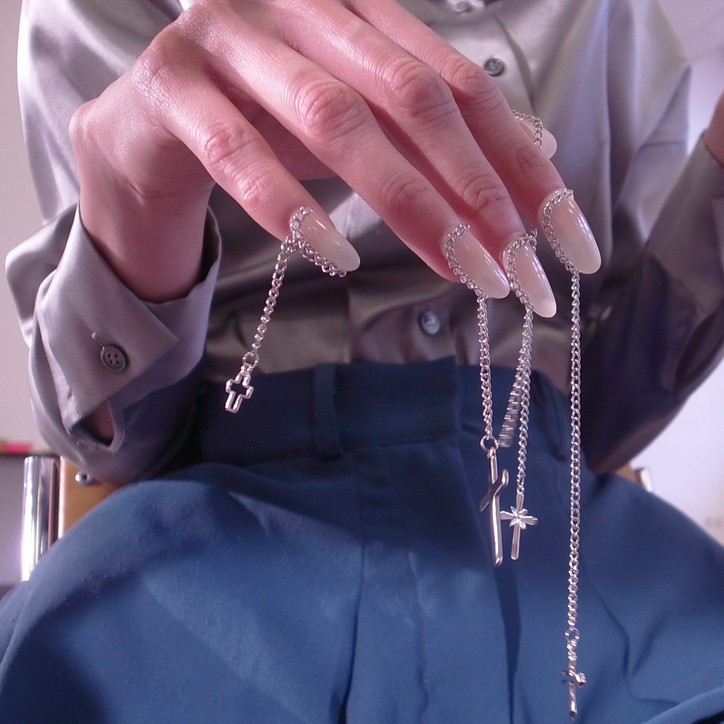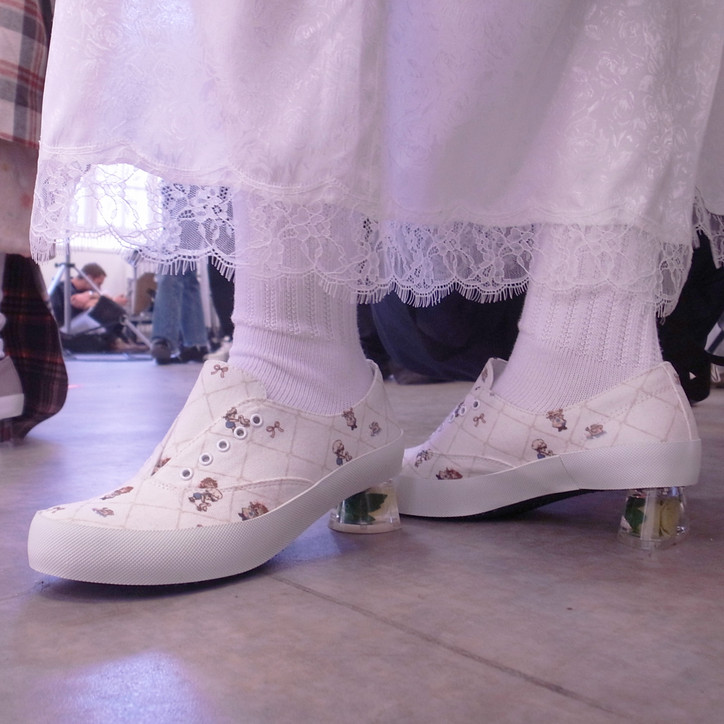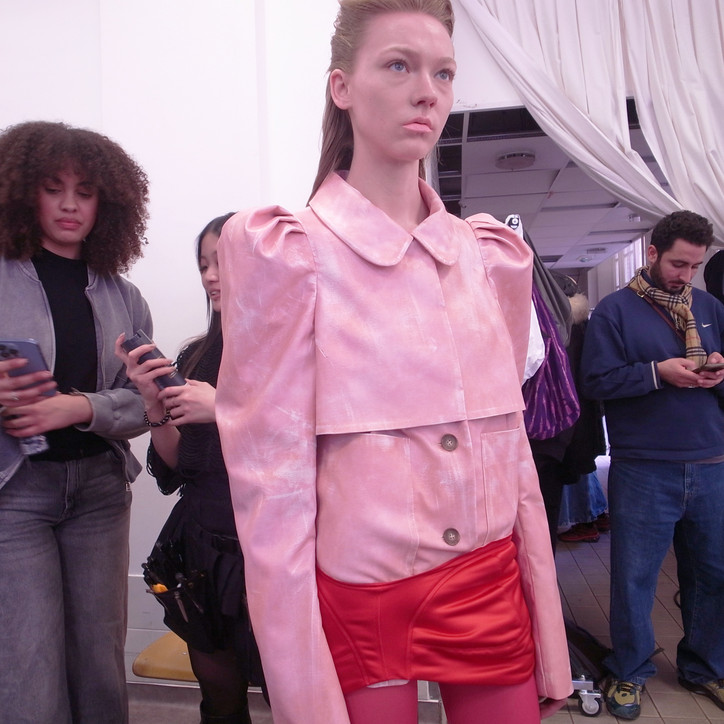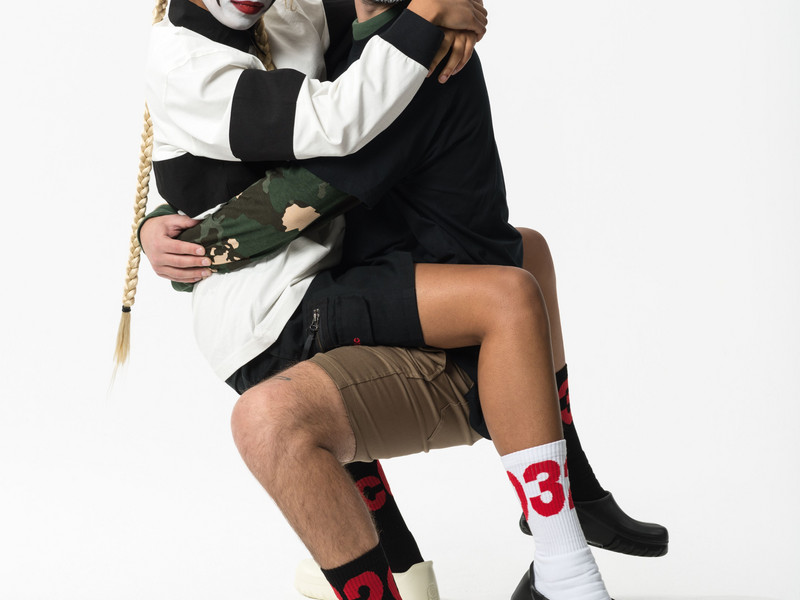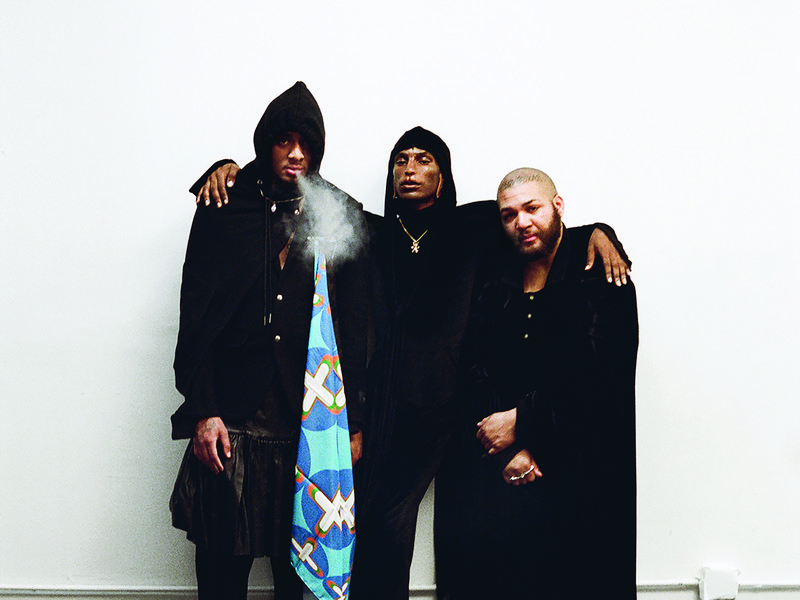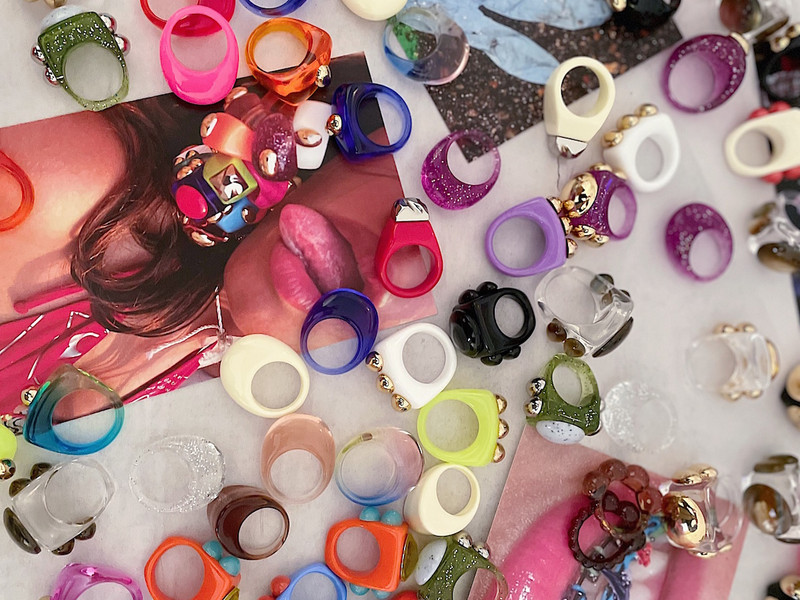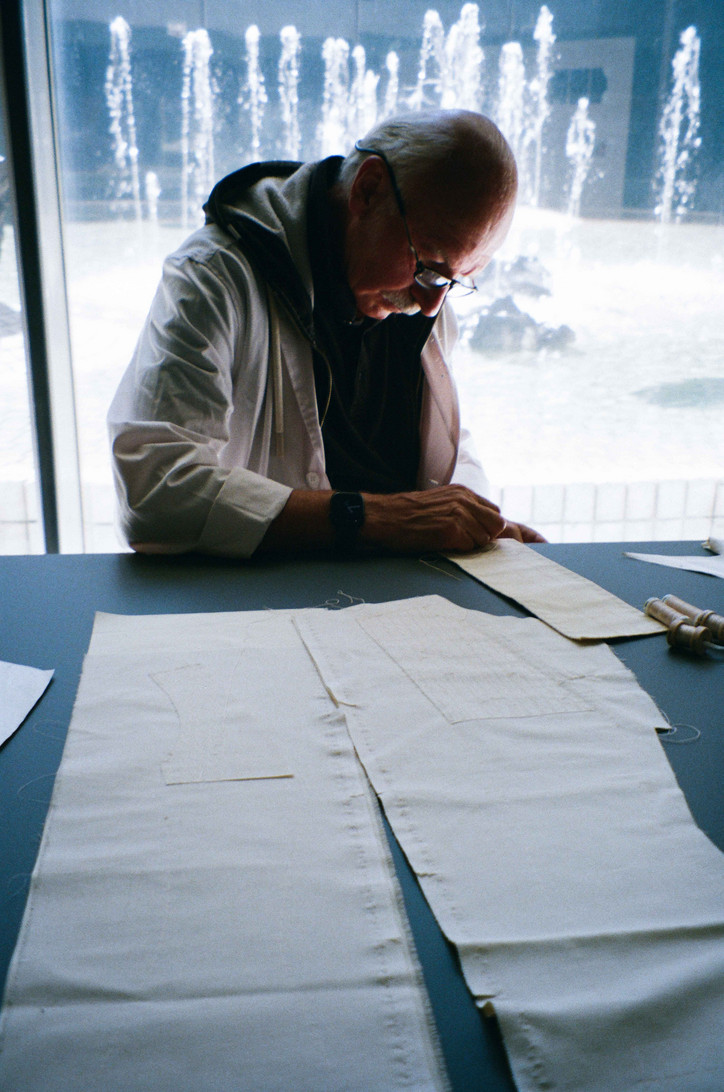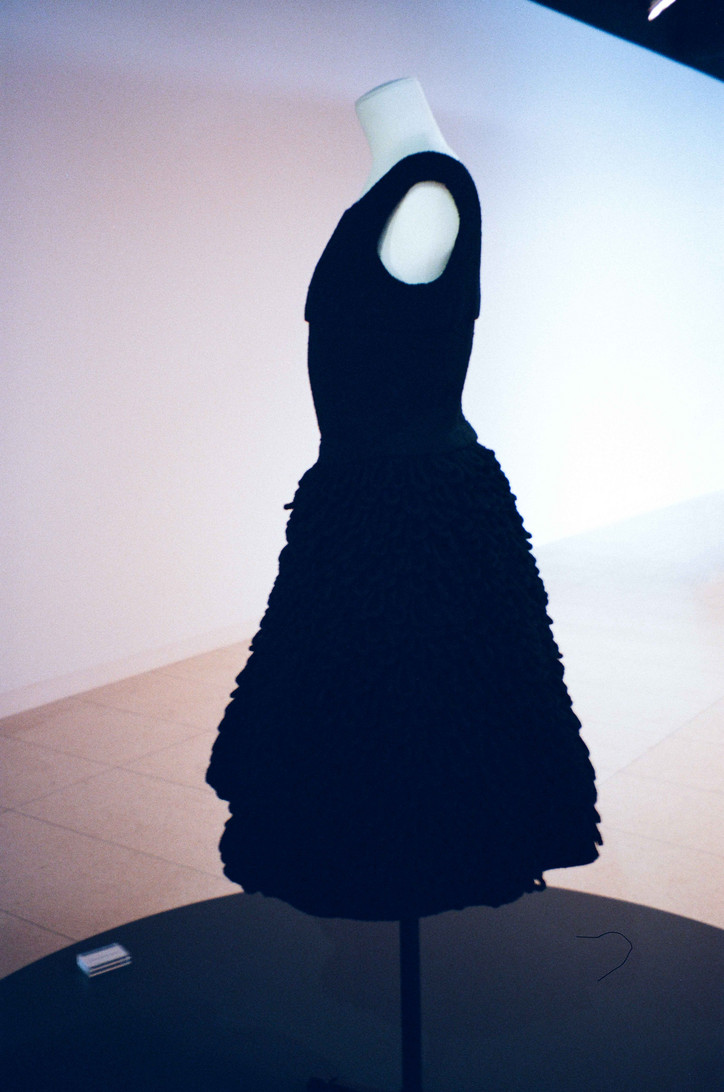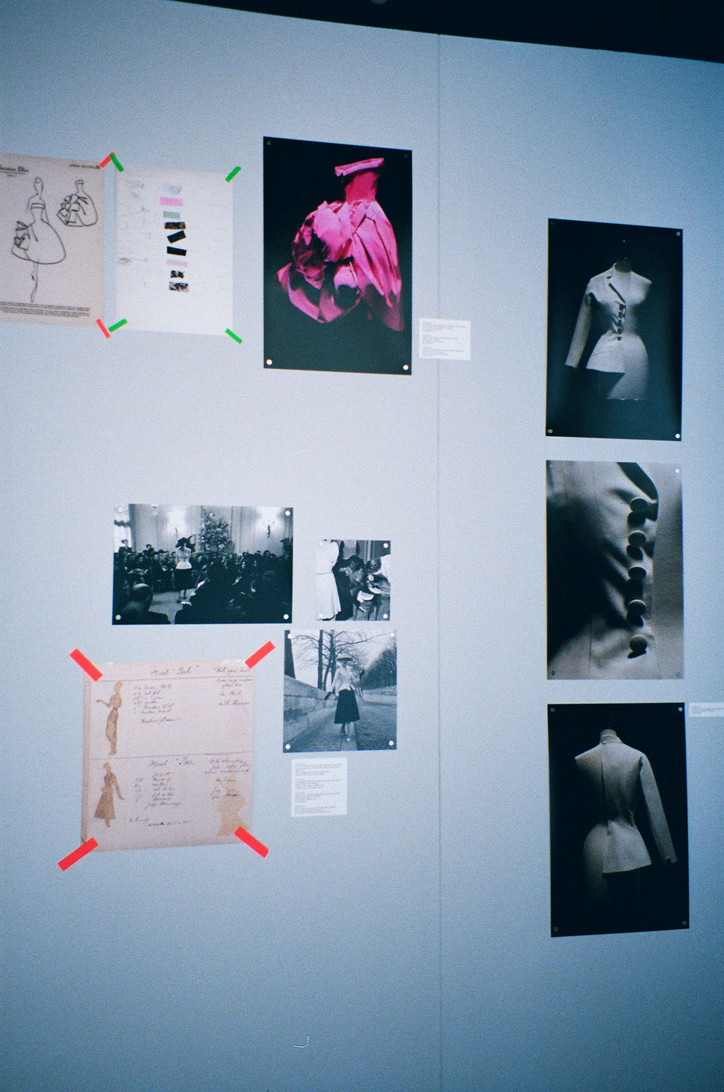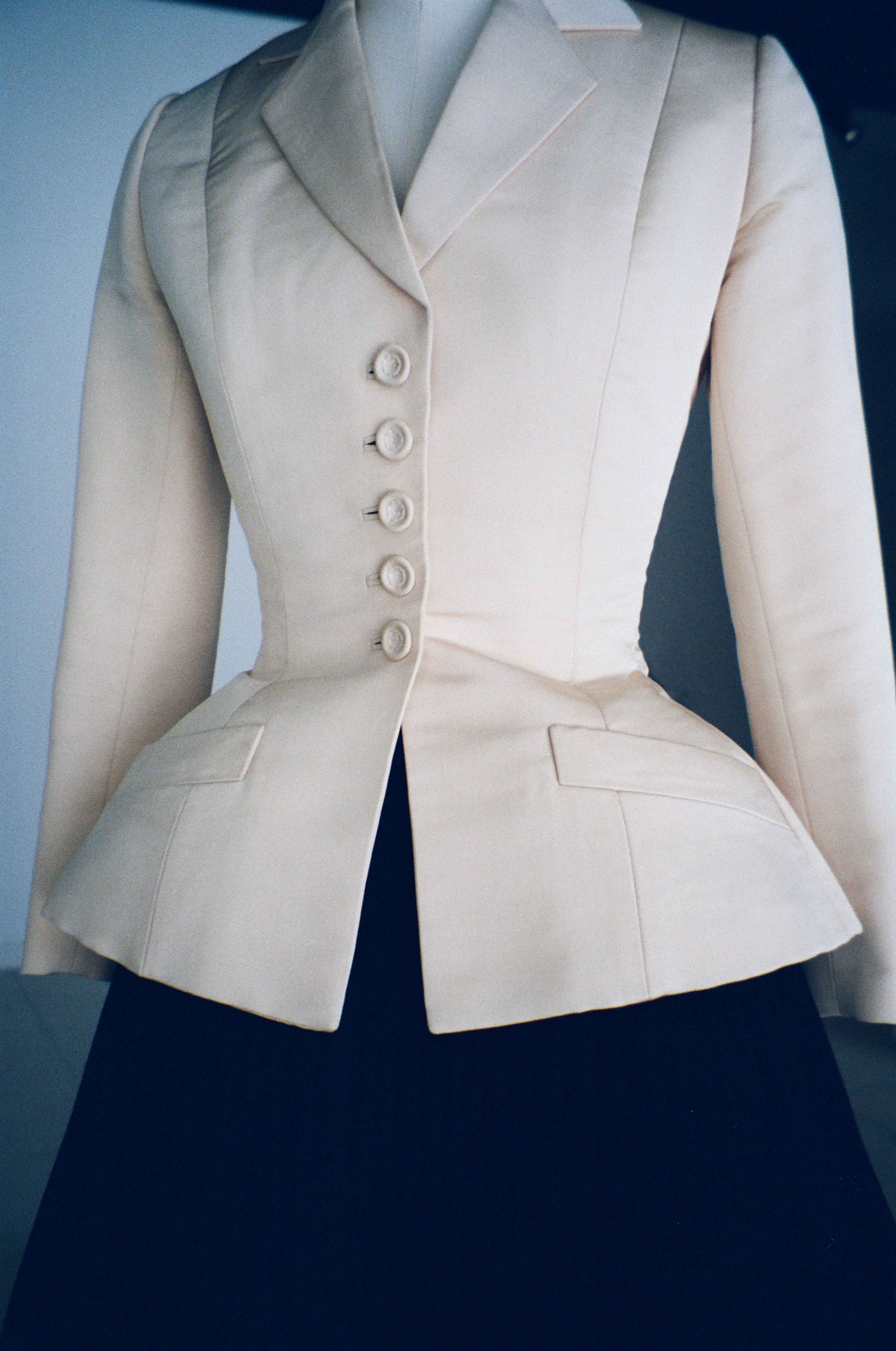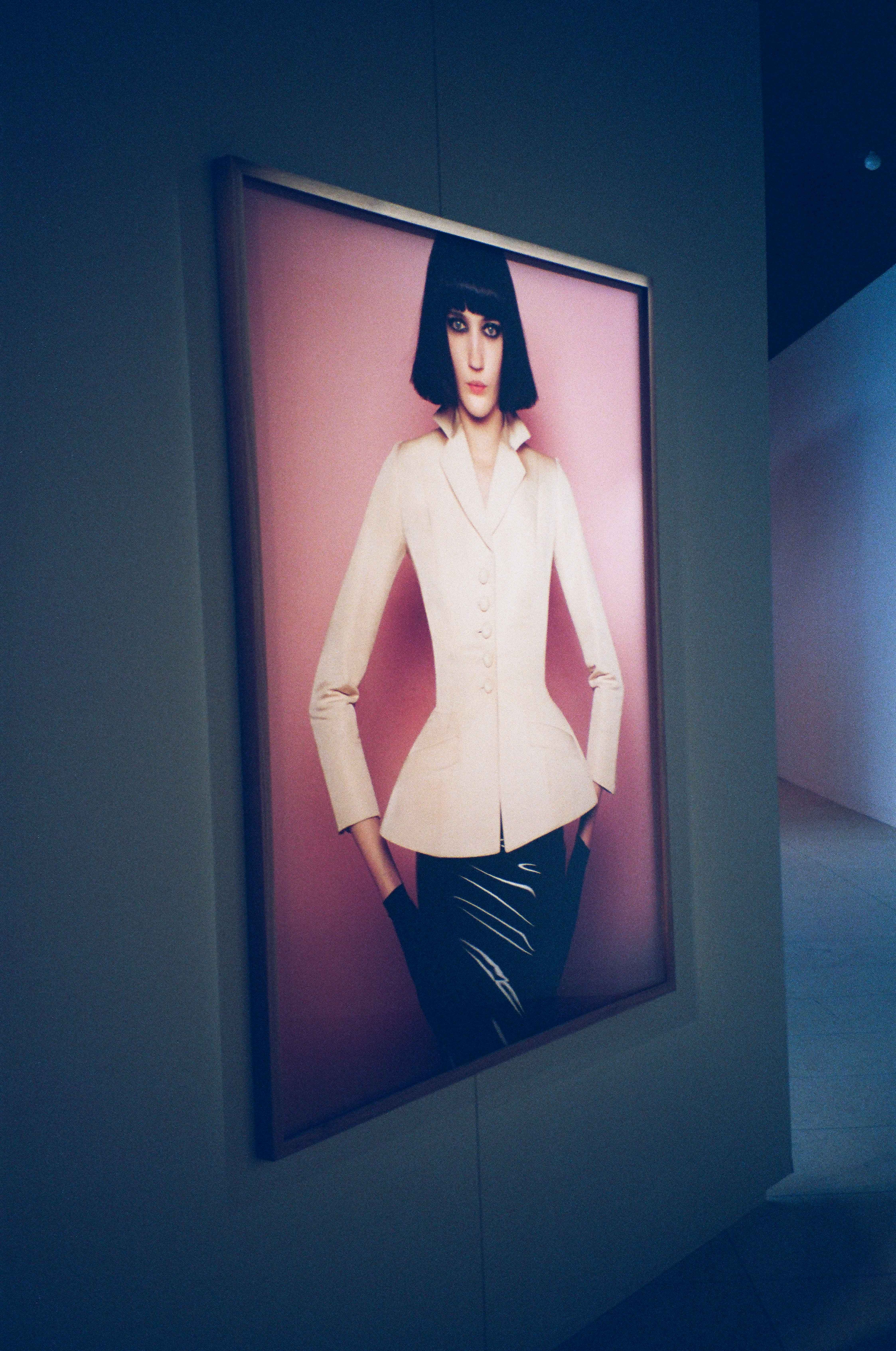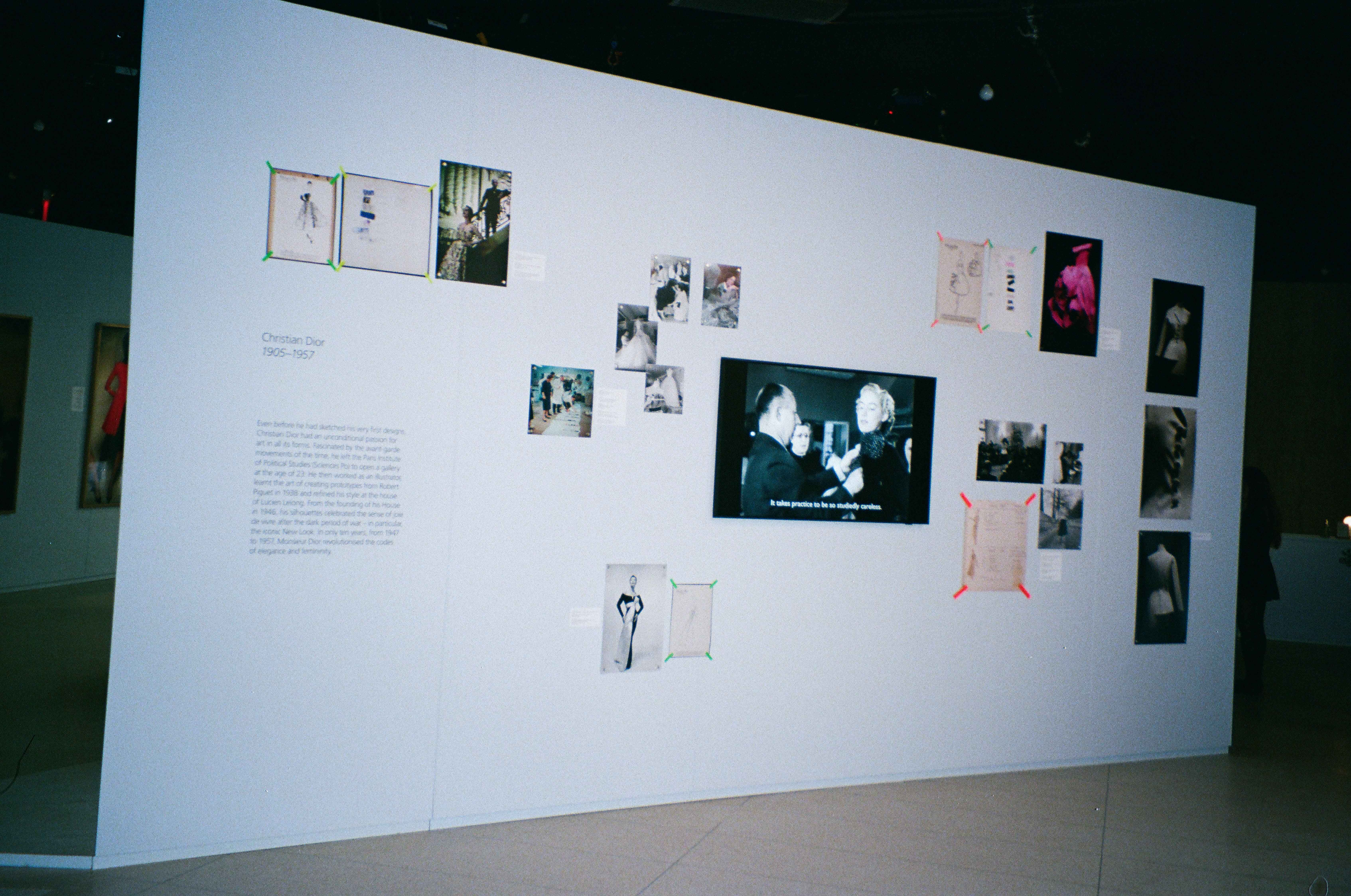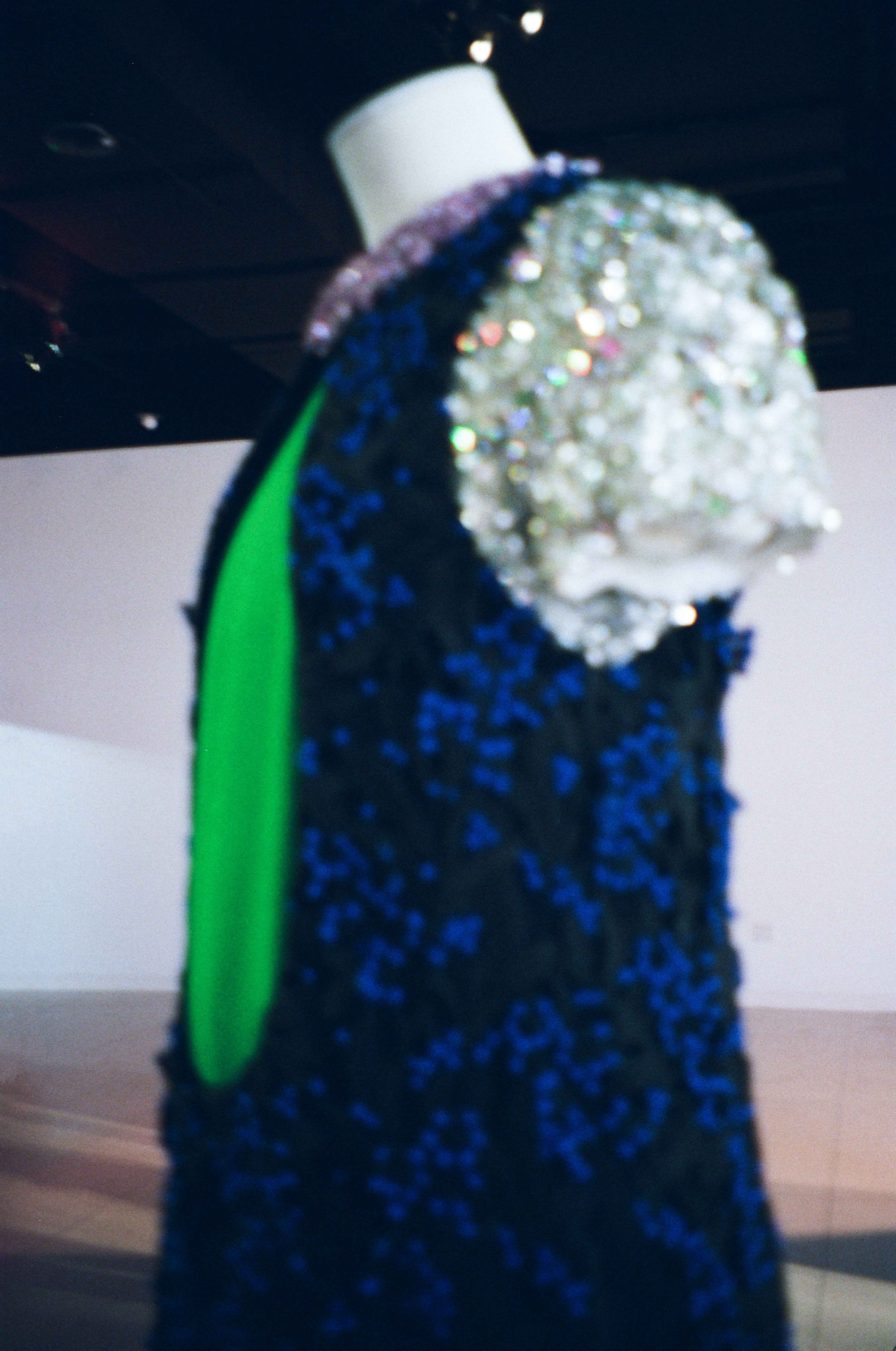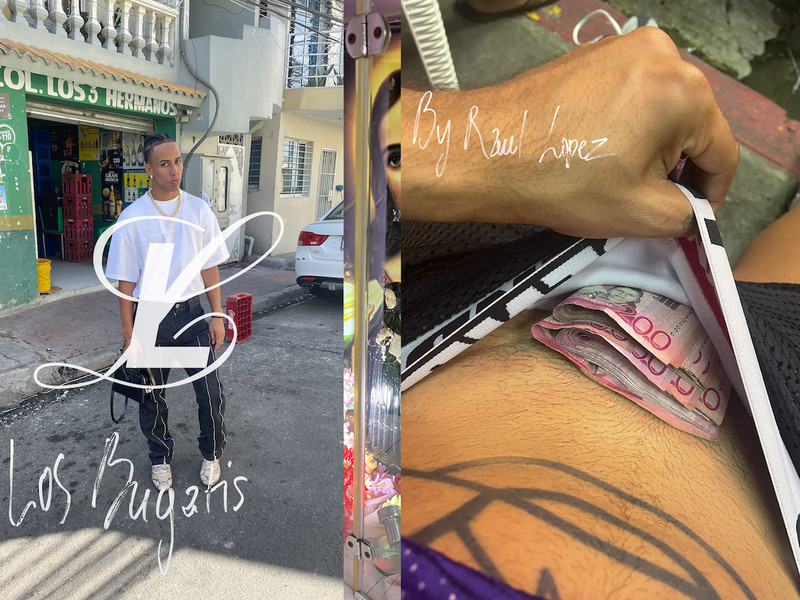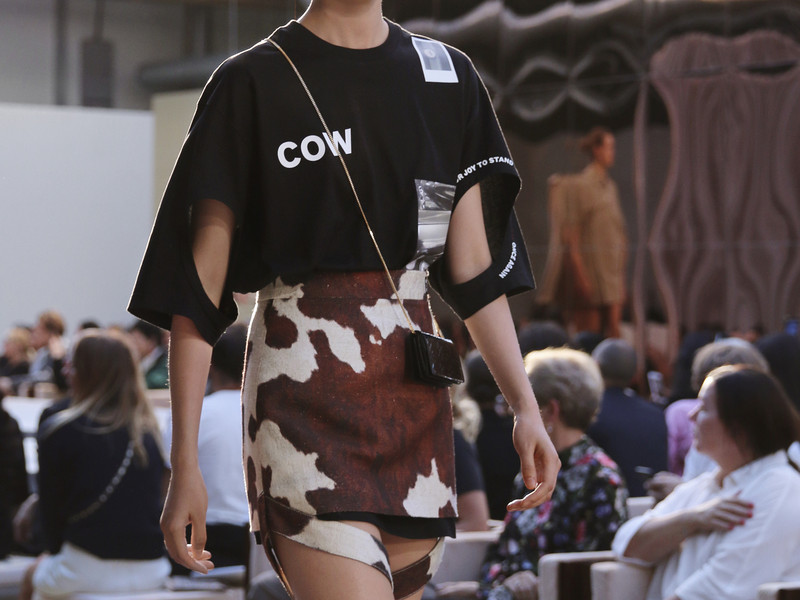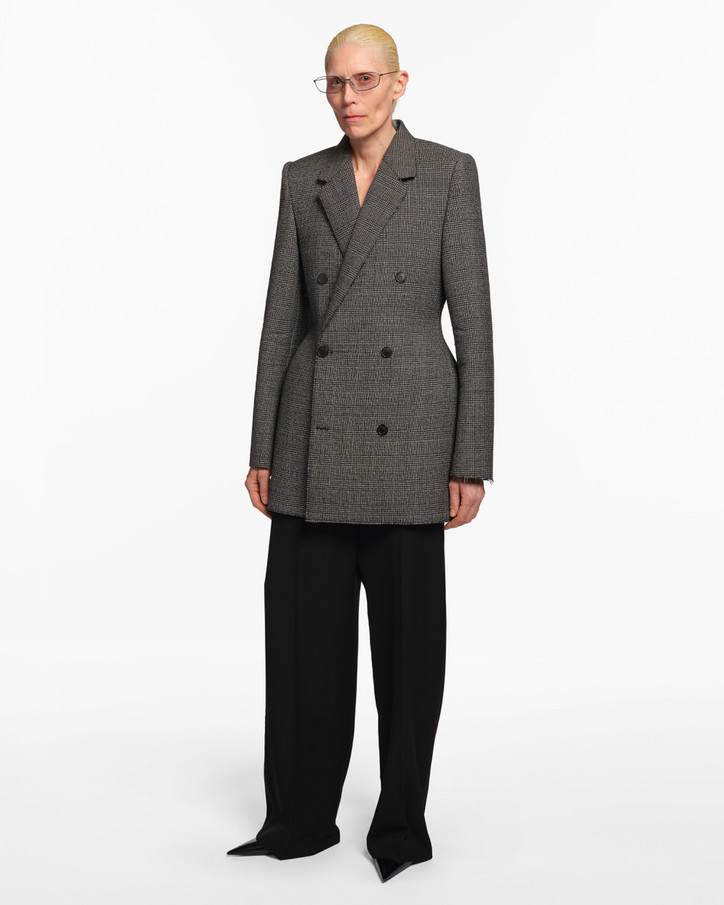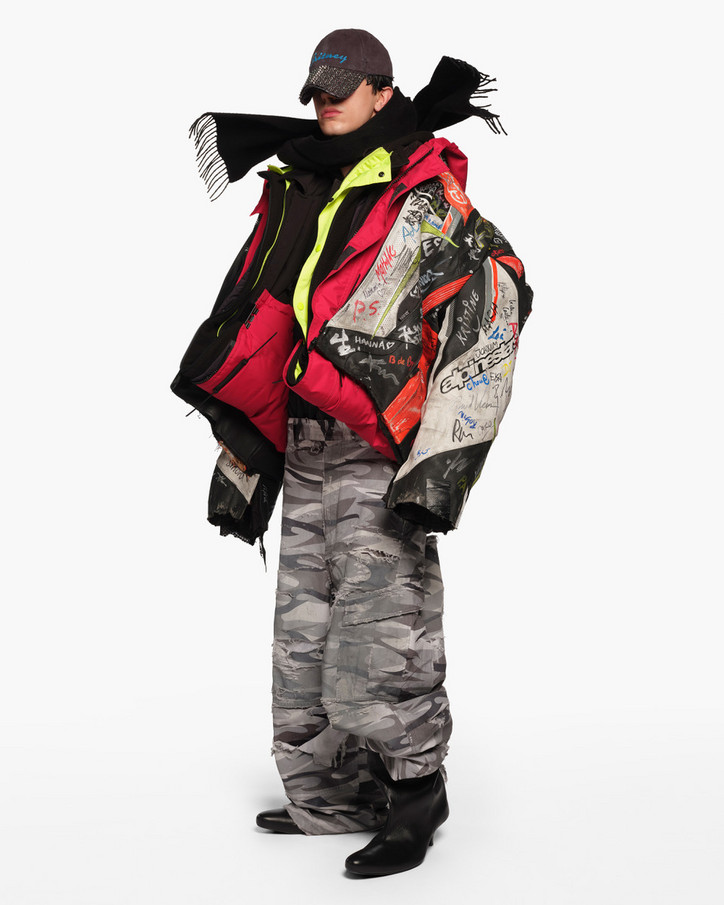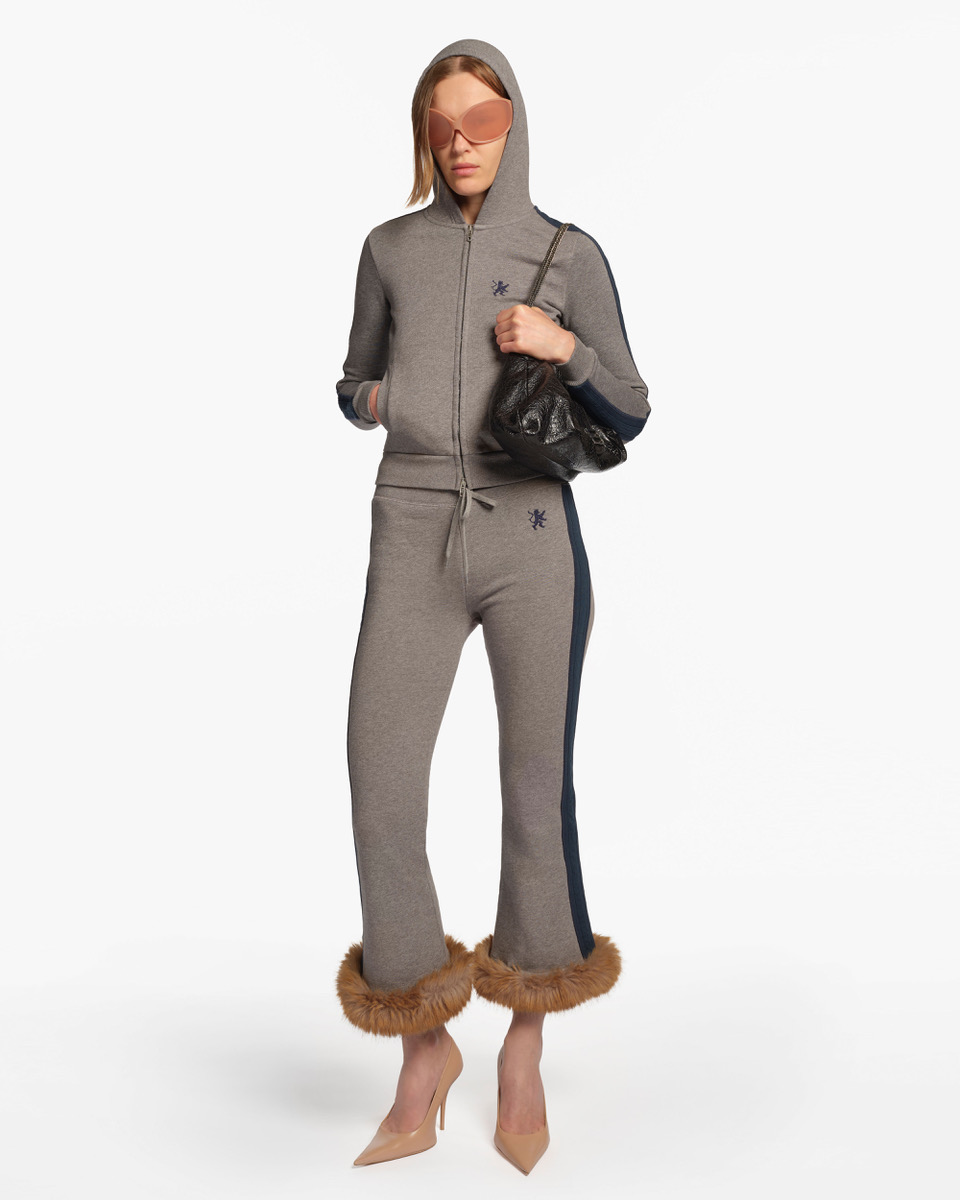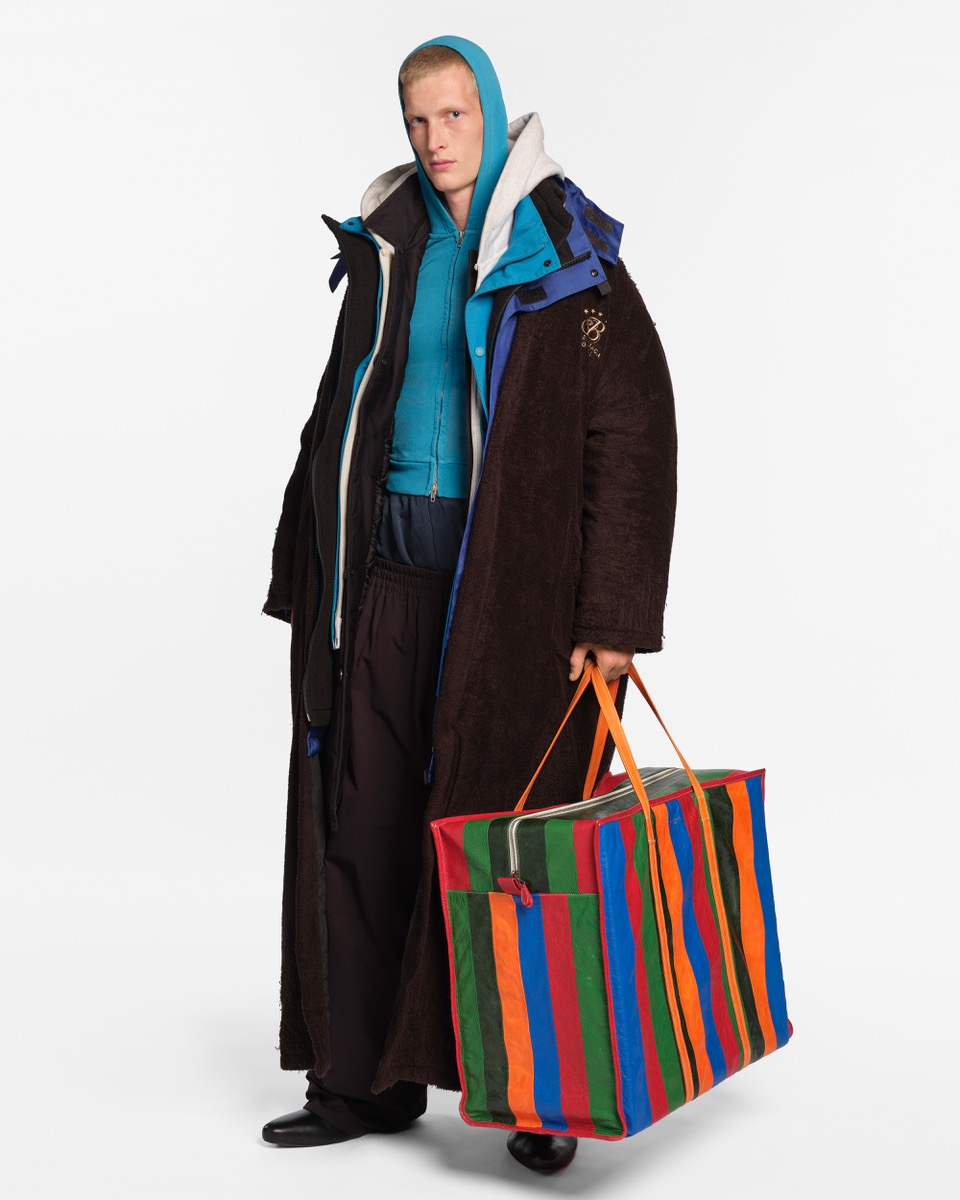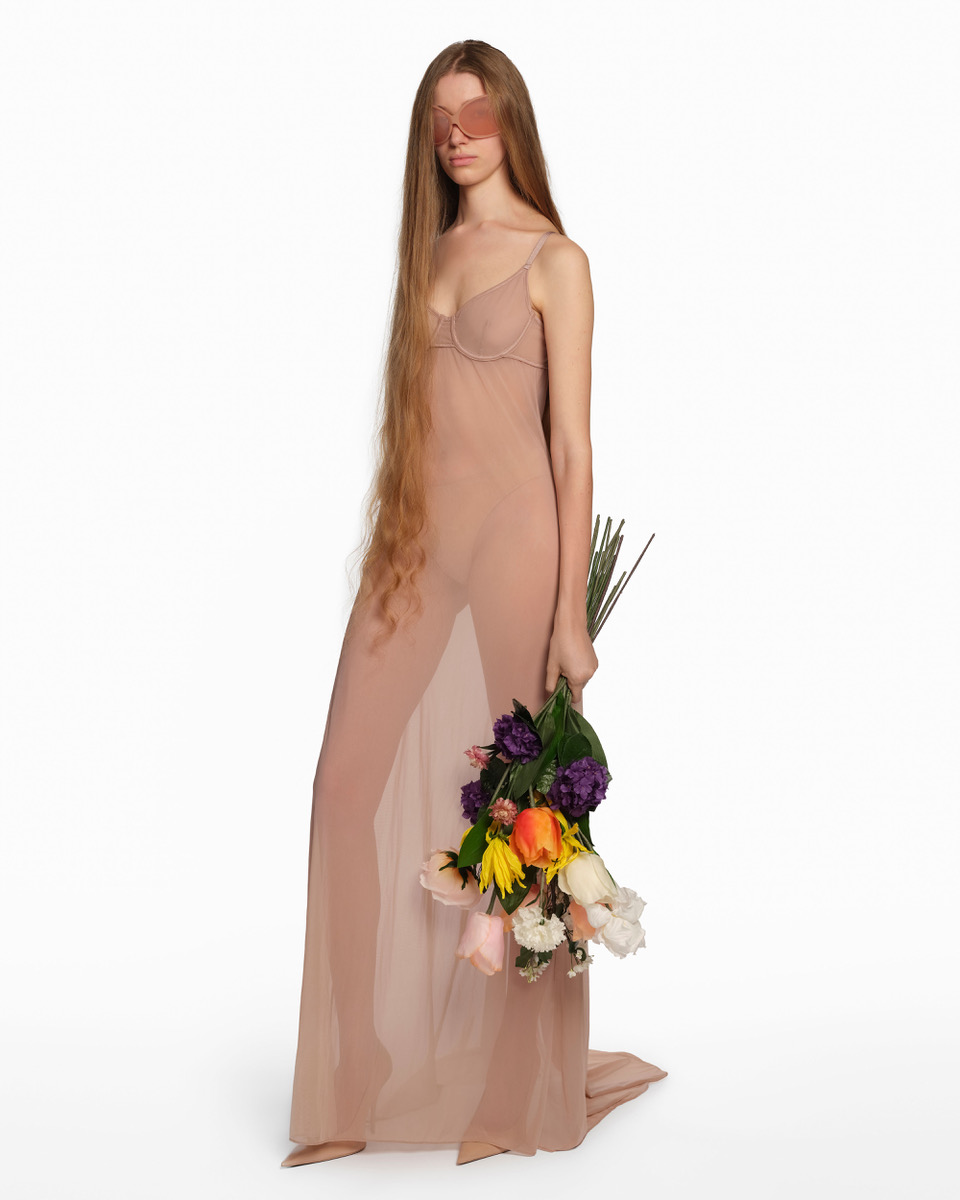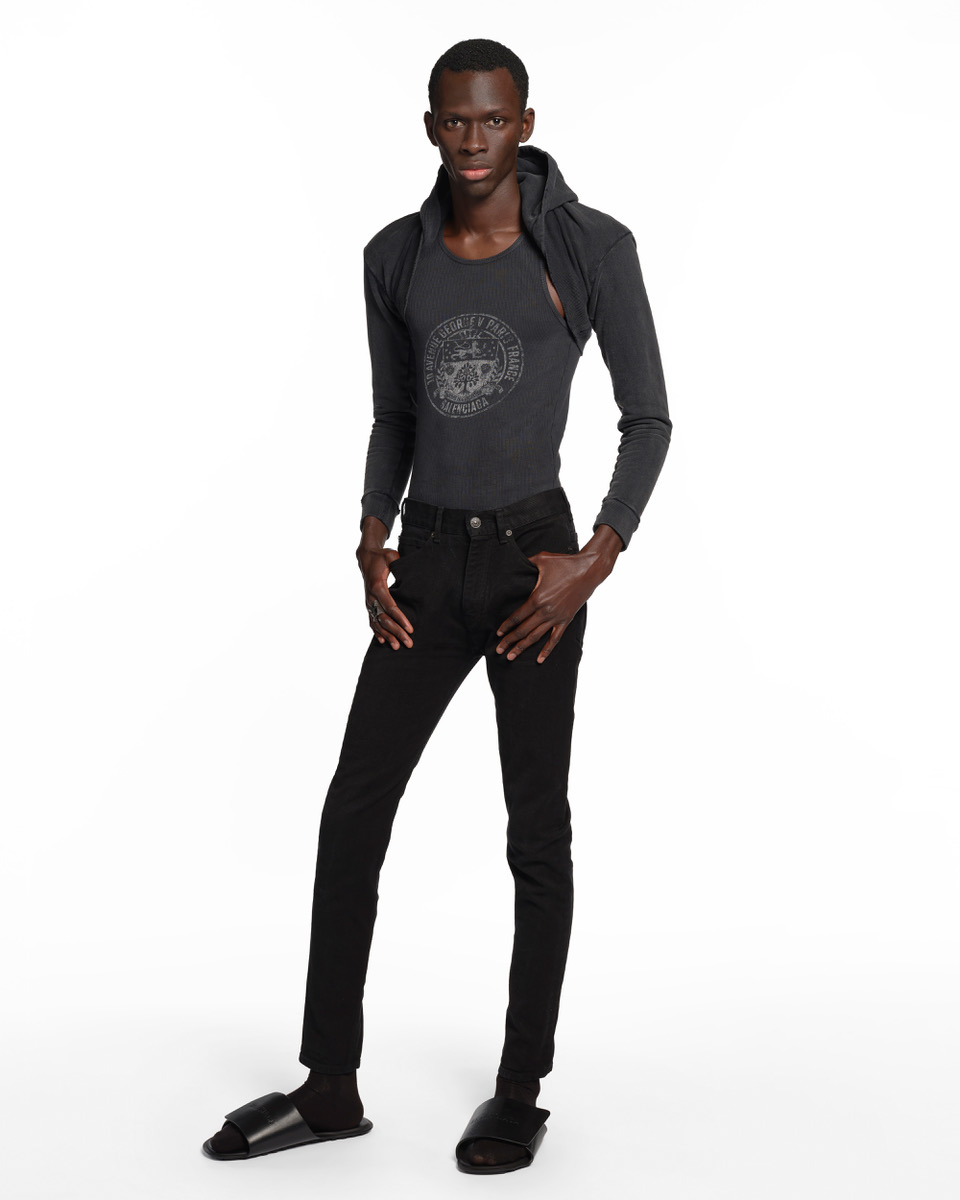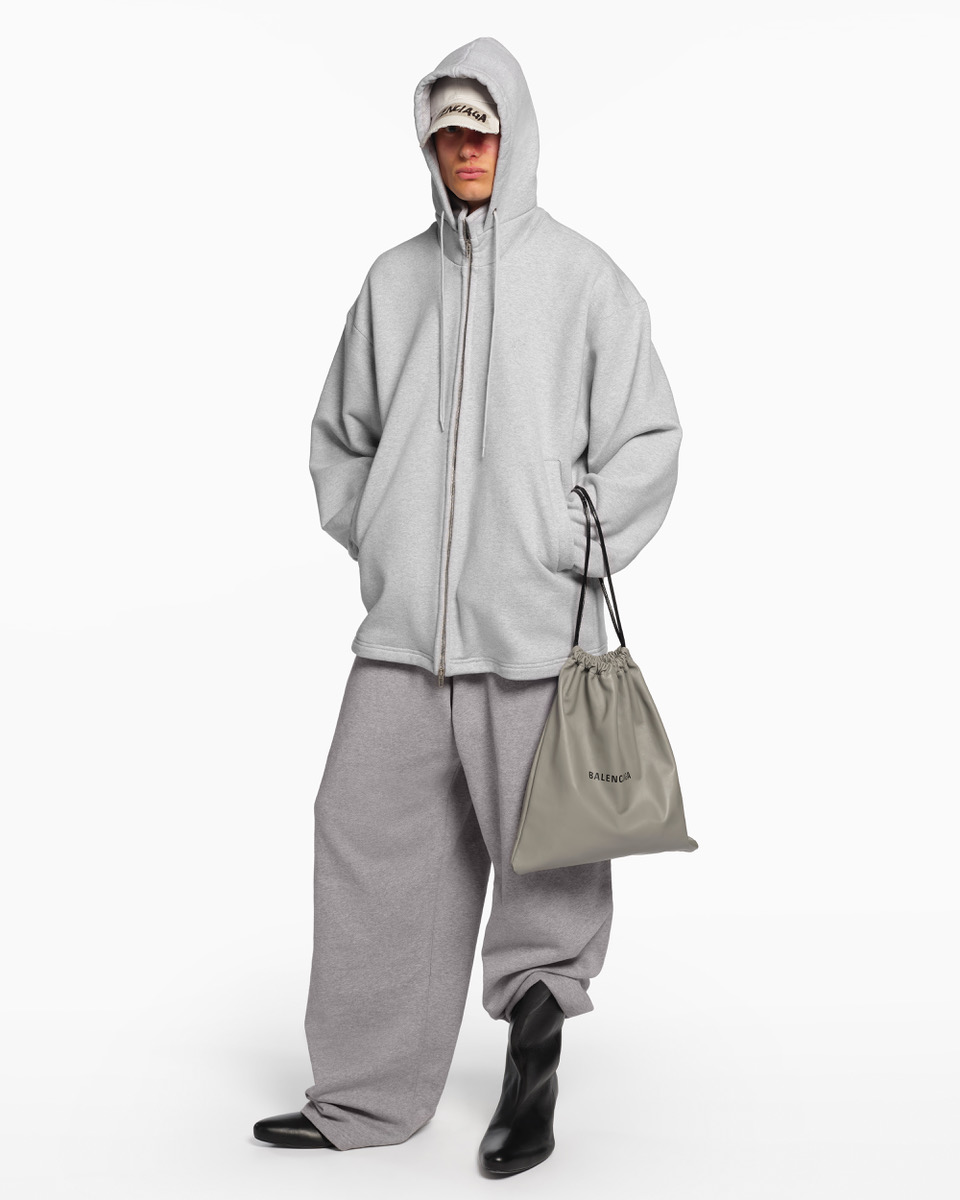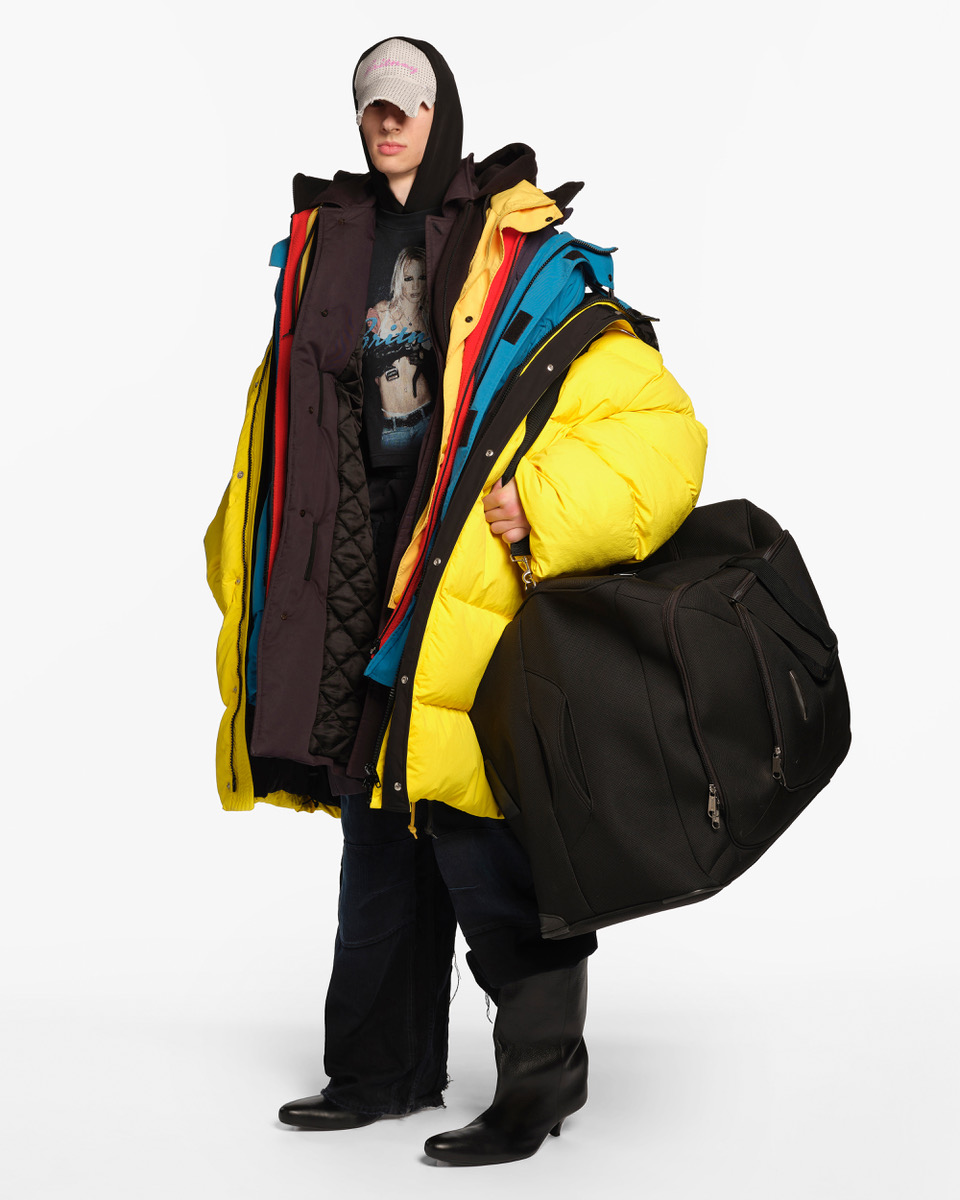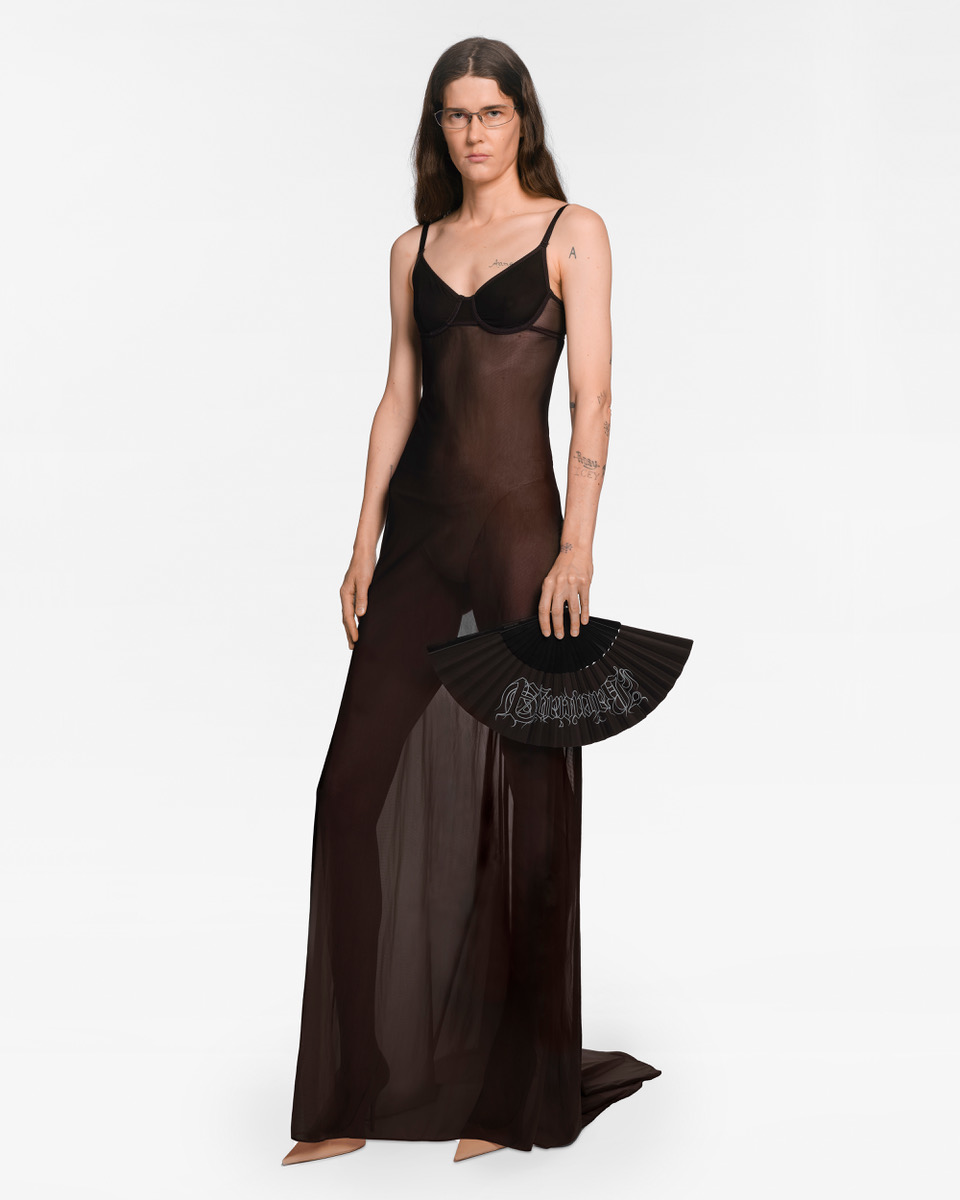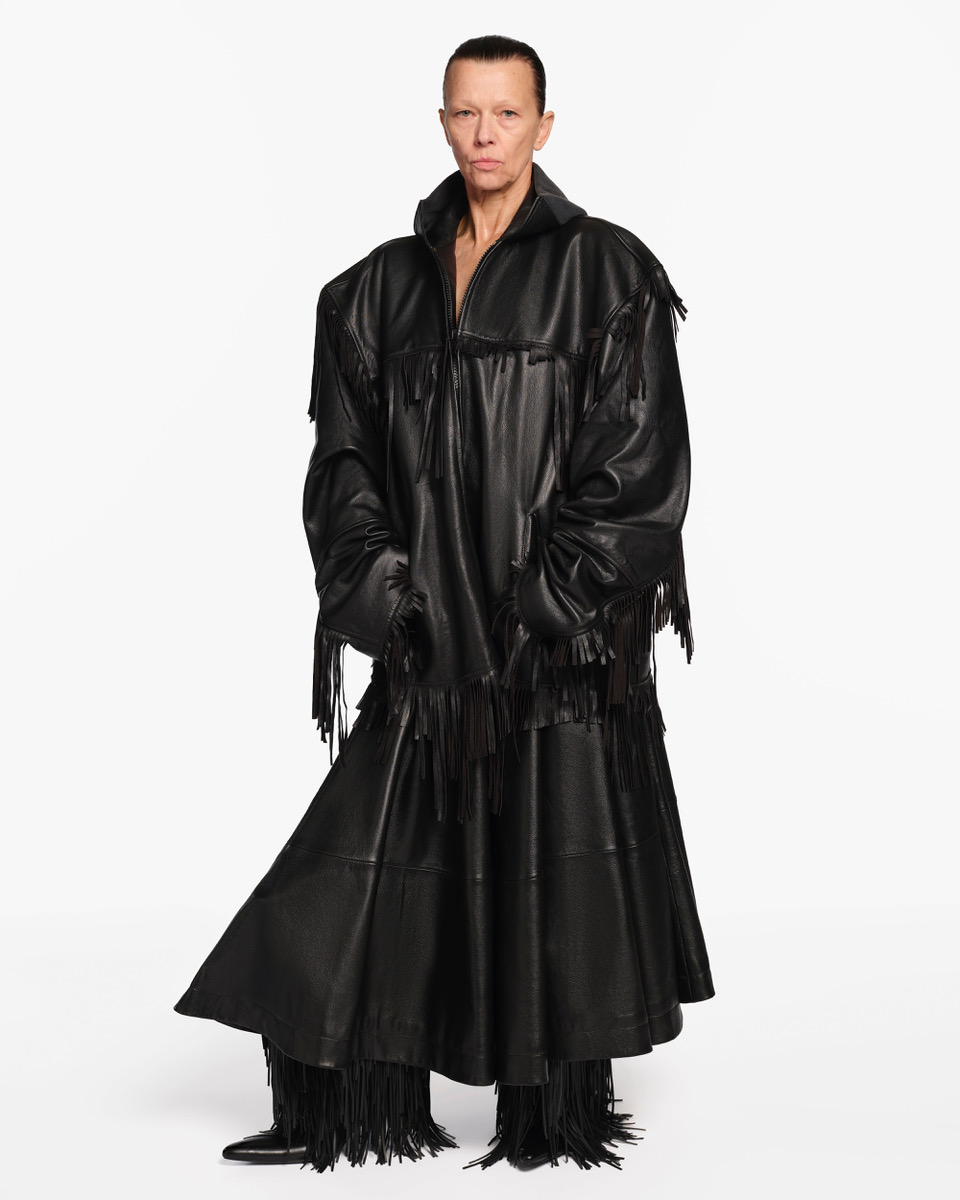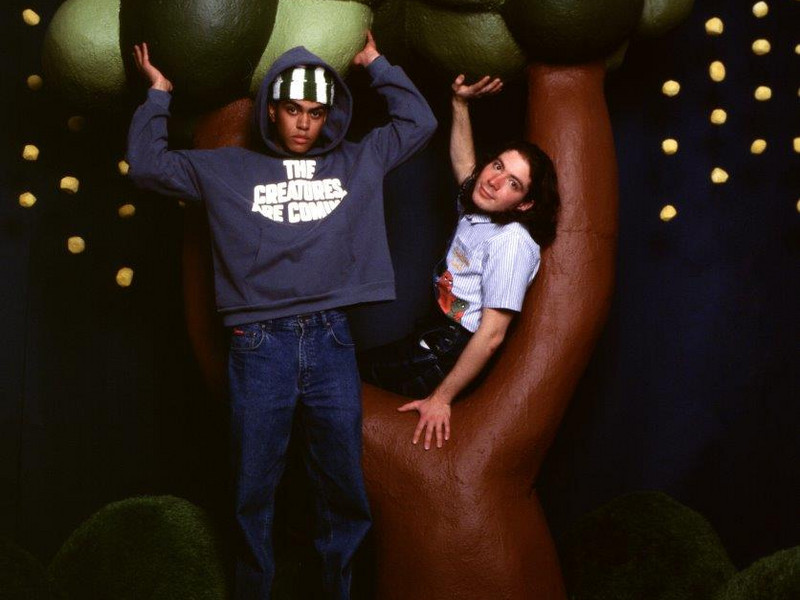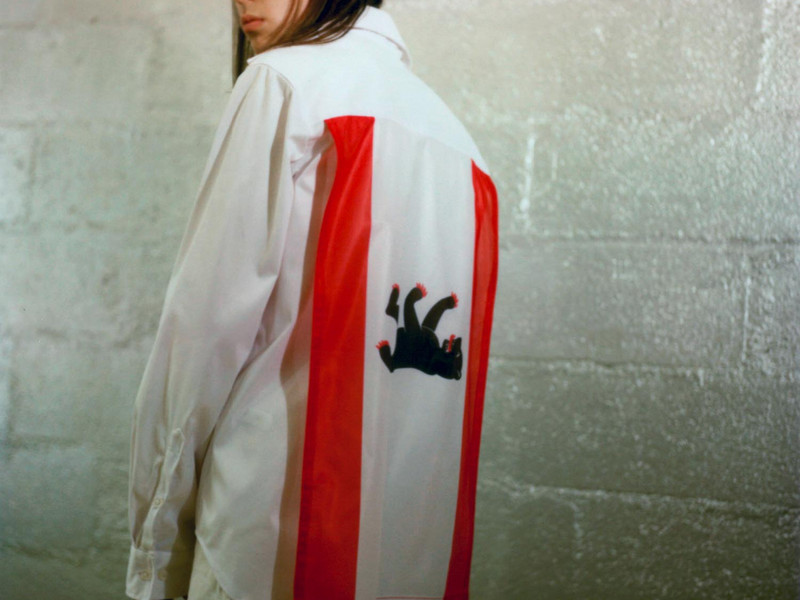Inside Gabe Gordon's Icy Wonderland
Gabe has been developing his own fabrics since 2019 with a focus on body-hugging and distressed knits coupled with the intimacy of hand-dyed fabrics to further explore notions of decay in clothing. By innovating with eyelets, he’s created a signature technique dubbed the “moth hole” that disavows purity, reflecting the growth that comes with exposure and acceptance.
For his Autumn/Winter 2023 collection, he wanted to create something free-flowing, untethered from grief. Ironically, he found the best way to do that was to allow himself to go back to the place where his father died. So, he takes us back to where he grew up, the suburbs of Ridgefield, Connecticut, to write a new ending. Inspired by 1960s ice-skating ensembles and workwear, starchy fabrics, glitter and frills alike, he brings a new spirit to a familiar environment. The collection, shot by Walker Bunting, features the inescapable presence of the moth-holes but in a way that doesn’t try to hide them, championing the tatters they will leave.
office chatted with Gabe from his studio, touching on everything from Joan Didion's take on grief to Lana's mod aesthetic and his vortex-inspired knits.
Let’s start with the full scoop on this collection, and your work, more generally. I'd love to hear a little bit about the process.
Well, I started making clothes at school after my father passed away, and the grief from that has informed my work and the why behind it. When I first started, I was inspired by decay, you know, stains I found in my dad’s old clothes and how they reflected a moment in history – my dad's history. I have been trying to find my own way of creating new histories through dyeing processes and other ways of reflecting decay. But with this new collection, I wanted to create something that felt more free-flowing, as if I was trying to separate from that grief.
When I think of grief and dying, I always see them as a part of a cycle. There's always something that comes after. What is that – the new history you're uncovering?
I guess it's an exposure of my vulnerabilities in dealing with the grief and an acceptance of it. With my thesis at school and my previous collection, I was thinking about how to talk to others about my grieving process and how difficult it’s been. It feels similar to my experiences with queerness and coming out, exposing that private side of myself.
It's interesting that you tie that back to queer identity because I feel like it is a process of dying and finding a new history when you come out. Do you feel like there's any other feelings tied to your grief? Nostalgia maybe?
Totally. I actually shot the collection in my hometown in Connecticut, which is where my father passed away. It's weird because he didn’t pass away in the house I grew up in, just in the town I was raised in – my parents moved a bunch. But even though it's this new place, I formed a new nostalgia for it because, when he passed, all my siblings came home, and we were all grieving together. It was super nostalgic.
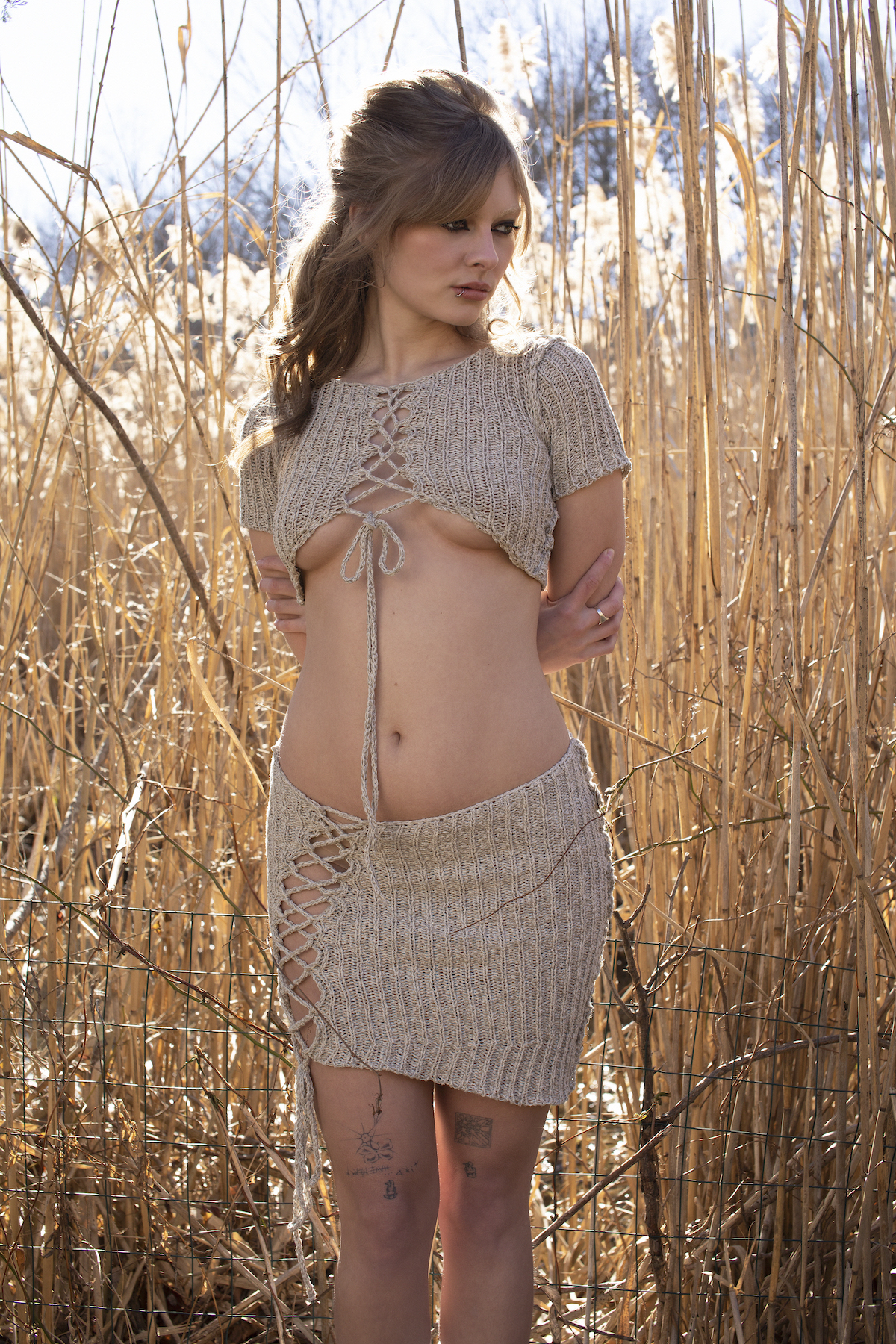
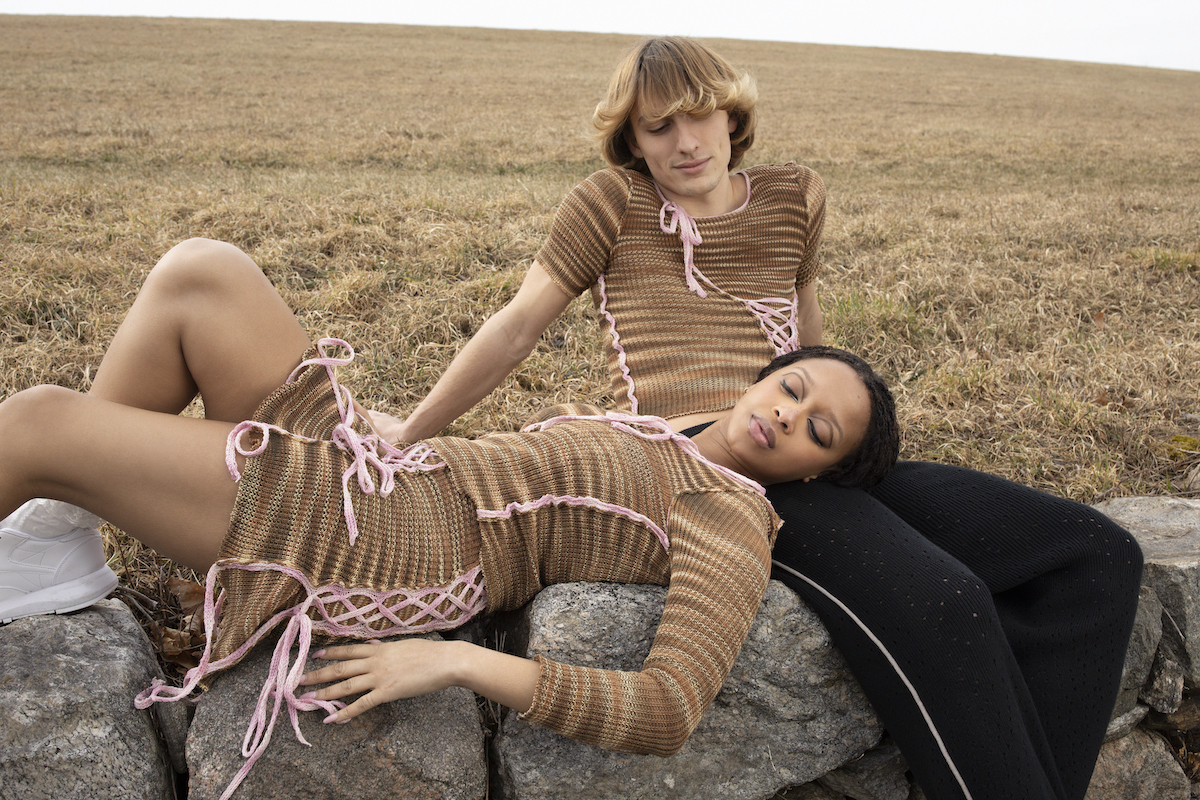
If you could describe grief as a physical sensation, what would it be?
That was actually a big inspiration for my initial vortex pieces. I read a lot of Joan Didion, who writes about grief.
The Year of Magical Thinking?
Yeah, that book is one. She talks about grief being this vortex and spinning – like you're lost in space – and I thought of dyeing similarly when I started making knitwear. The way I dye yarn is called ‘space dyeing,’ creating this moiré effect – like it's spinning around the form and wrapping. To relate it to this new collection, I was also fixated on snow globes and the idea of objects within a snow globe being stuck in time.
When you think of Ridgefield, where you grew up, are there any specific memories or images that immediately pop into your head?
It’s kind of funny. It's a snow day today here, but I think back to playing in the snow in my town and the storms when it would get super intense, like two or three feet of snow.
Which locations did you pick for the lookbook?
My mom lives on this beautiful lake in my town, so we started there – shooting around my house in the backyard. Then, we shot inside my house, and finally, at this YMCA pool, my mom actually swims at. I think it's super cool because the pool is covered in a bubble in the winter, almost like a snow globe. It fit that winter wonderland scene, rather than just doing an ice skating rink straight up. The last location was just these fields near my house.

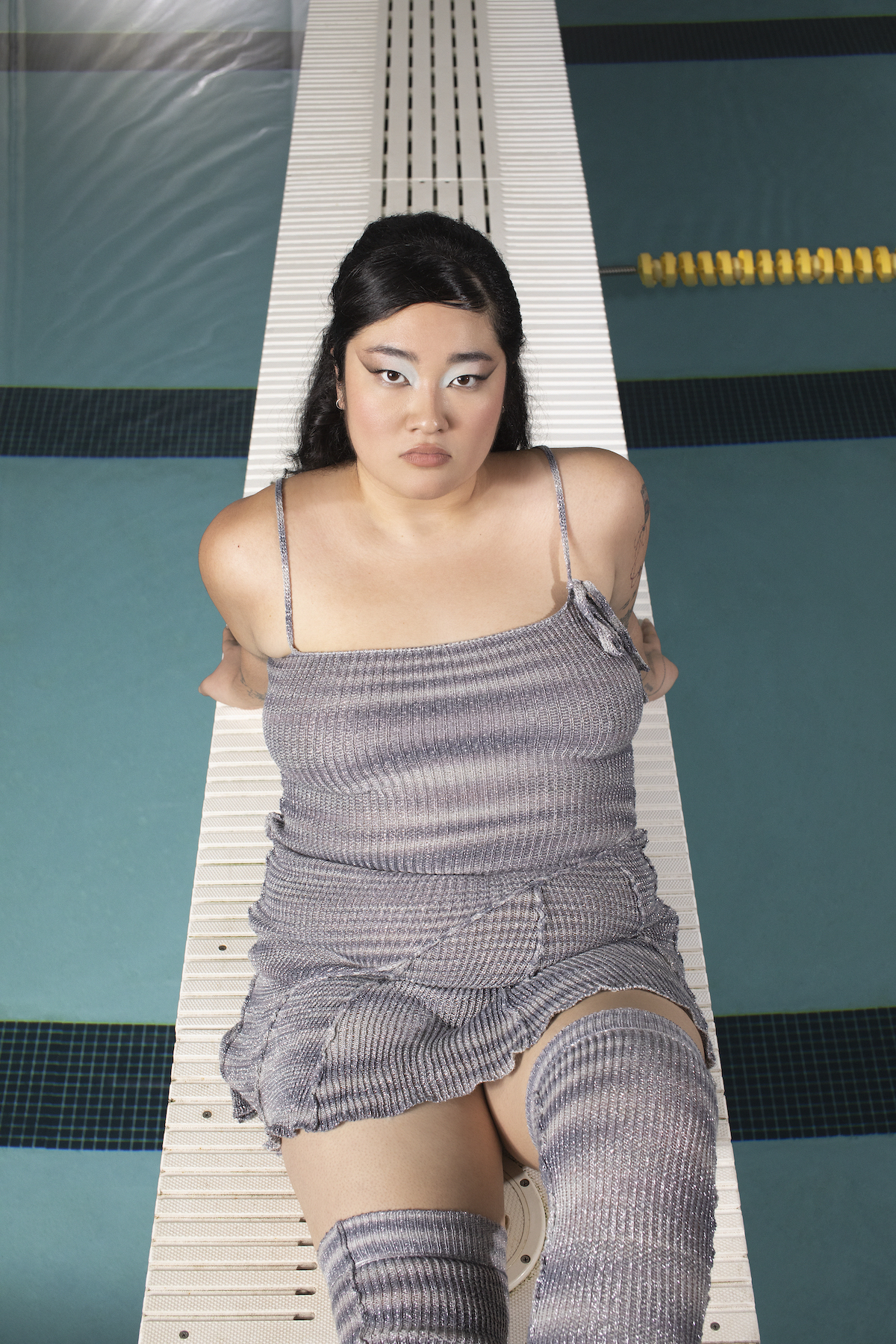
What was the collaboration like – thinking about how you wanted the garments to be captured?
I collaborated with Walker Bunting, who I worked with on my past collection. I love working with him. Our aesthetics really align, and he was super excited when I mentioned wanting to shoot in my hometown. I knew exactly which locations I wanted because I'm from there, but we just went with the flow. It was pretty collaborative, same with the stylist.
For the collection itself, I actually collaborated with my friend Charlotte. We studied together at RISD in Textiles. Her field is print design, so she helped develop the print in some of the pieces – the little stars and the cut-and-sew pieces.
What do the stars represent?
I started by looking at different specks of things, like sparkles, and then I found images of these sand stars – grains of sand that look like stars – and then also snow mites. We drew from images of those different objects, which turned into this star print.
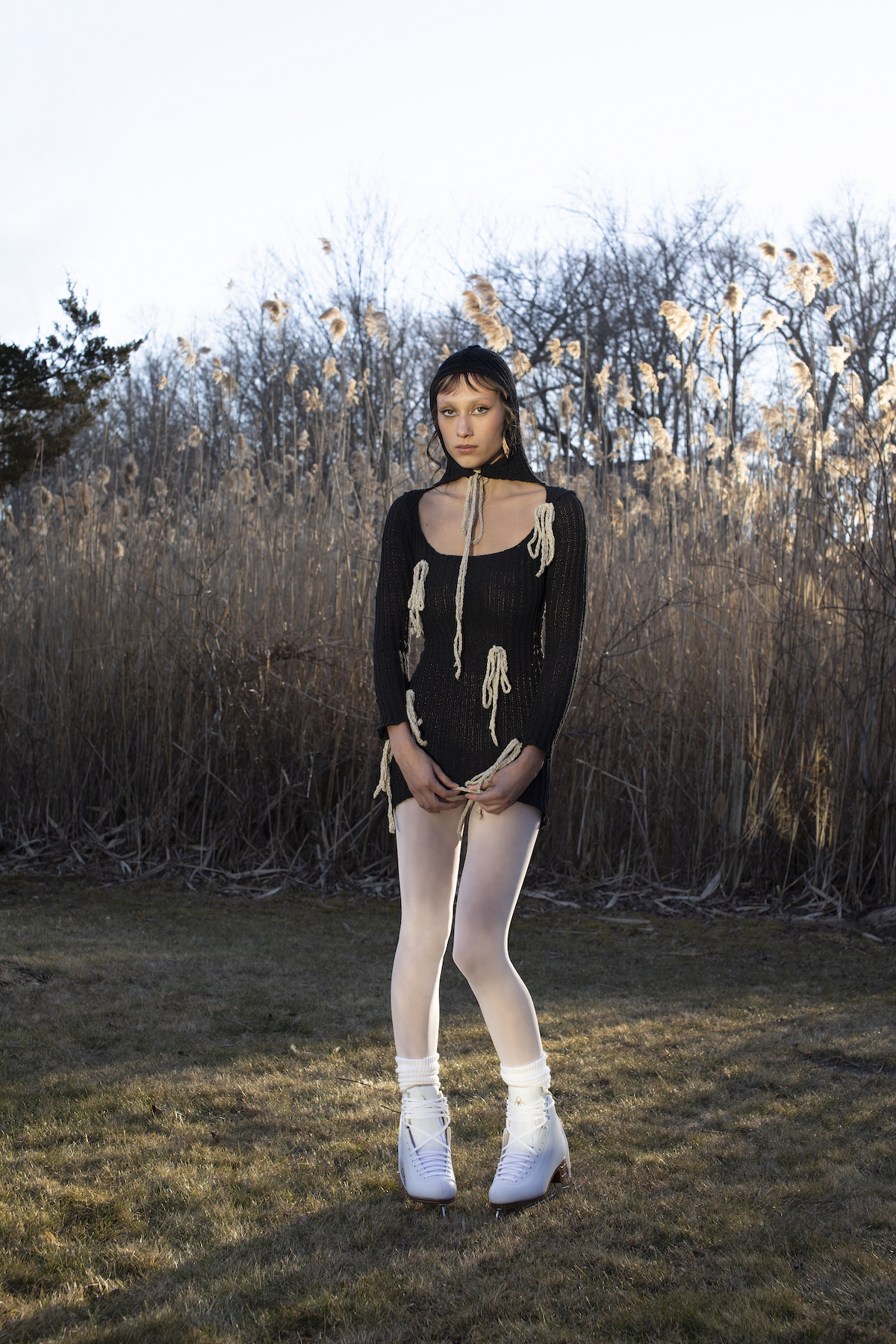

There's something natural to the wear of the garments so that reference makes a lot of sense. And the moth holes, do they signify aging?
I thought about the moth holes as a way to make the garment impure, as if decaying and tattering, but also as a form of ornamentation.
Because it’s intentional.
Exactly. But it is random – how I knit them in. It's not planned, like, "Oh. Three holes in this row." Instead, I just do it. The biggest thing is keeping with the upwards gradation.
How long is your process usually when making each piece with the hand-dyeing and all?
I also go about that pretty free-flowing. I came up with the color palette and just immediately started dyeing. I don't practice or create tests for the dyes a lot. I just go straight into it and create the schemes for the collection. I like working quickly and creating as I go because I can always edit and take pieces away.
Do you keep any hobbies for creative inspiration, or is it more in the moment?
I'm super into scrapbooking, and I think that always really helps the process, I also listen to music while I work. I make these big sketchbooks with every collection where I print out images and paste them in. It's fun to look back at each image.
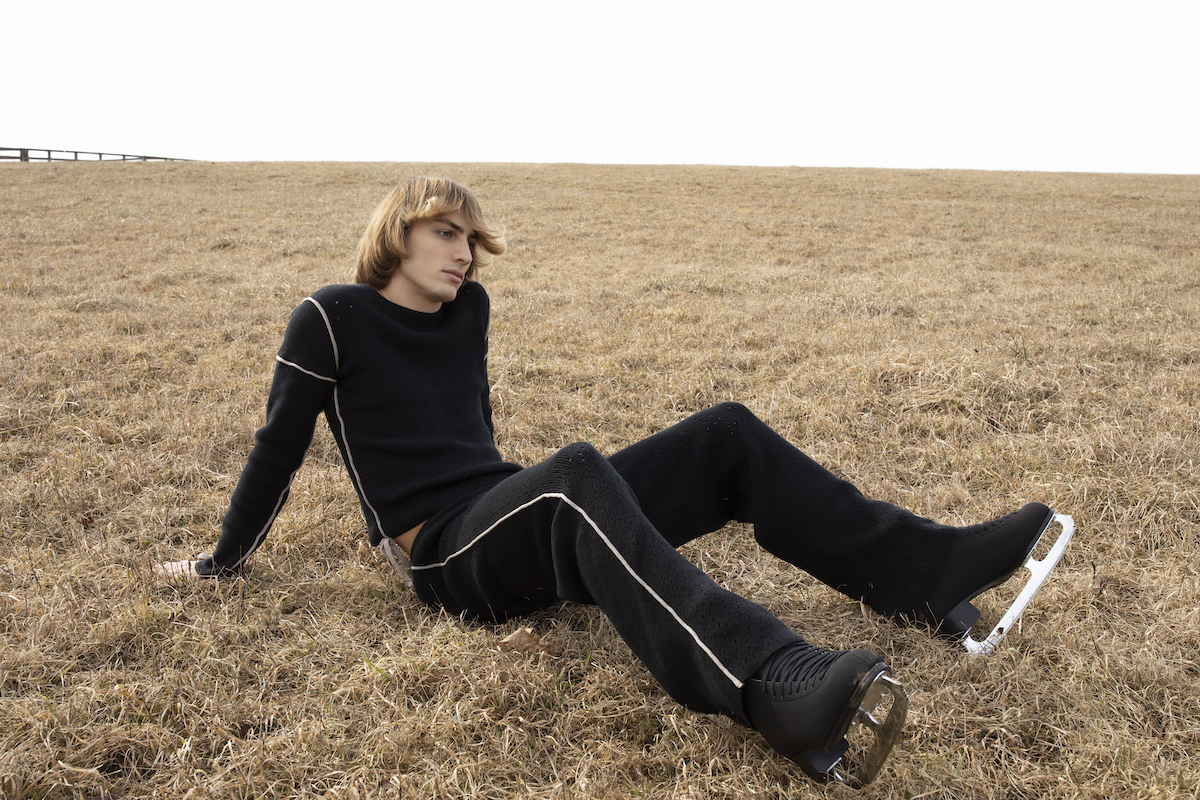
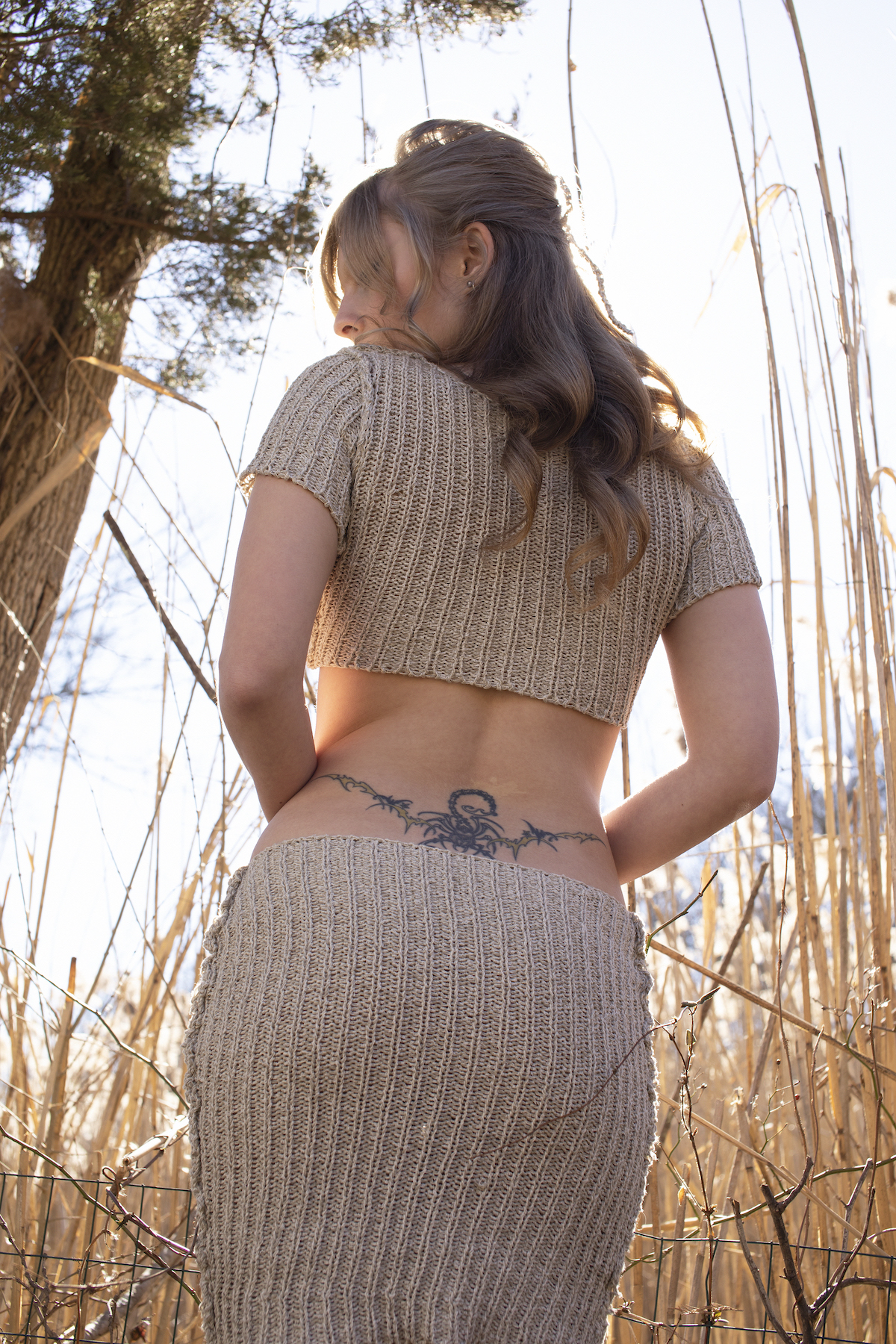
I know you’re a Lana Del Rey fan—
I'm a huge fan! You can say that I'm a super fan. I literally have her tattooed.
Gabe proceeds to show me his tattoo of Lana.
Love that! Which Lana song is playing on the aux as you work in your studio?
Definitely Radio. I'm obsessed with her new stuff, but the old Born to Die era will always be it.
For sure. Is there a Lana song that you’d say inspired this collection?
Probably still Radio, but I also was listening to a lot of artists from the sixties, like Roy Orbison, the Lewis Sisters… I’m really inspired by Lana’s romanticization of the American aesthetic and her obsession with mod culture – the fifties, the sixties. So I started there, looking at the clothes she's worn and what inspires her work. Then, I started looking at clothes from the sixties – workwear, and Mad Men costuming, which led me toward sportswear and, specifically, ice skating.
Maybe it's not my first fall/winter collection, but I wanted to create this winter wonderland scene. So, I stopped at ice skating and figure skaters and that type of work wear – the starchy and glittery fabrics they wear.
How do you want people to feel when they wear the clothes?
I’m not sure. I don't really go into designing thinking about that or even what I want to wear. I'm more so referencing different motifs and images I'm seeing. I thought a lot about teens, around the age when I got into Lana Del Rey, and my town. The romanticization of that, the teen drama, and the angst.
Would you say your clothes feed into the nihilism and general angst that’s resurfaced over the last couple of years?
I think it's more optimistic. This past year has been really difficult, especially now that I’ve graduated from school and am figuring it out. I want to continue making work, but I’m also balancing the creative side with what’s in demand – what buyers will want. I'm like, "What is the point of doing this?" My entire process is optimistic in that it's about me creating my own history, trying to deal with my grief, and accepting it. I want to remain true to that.
